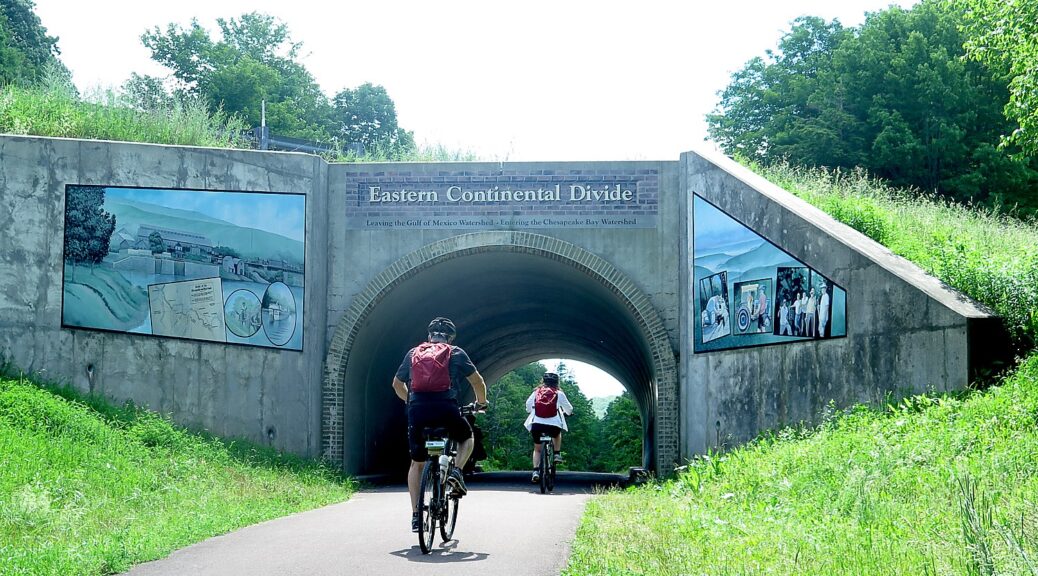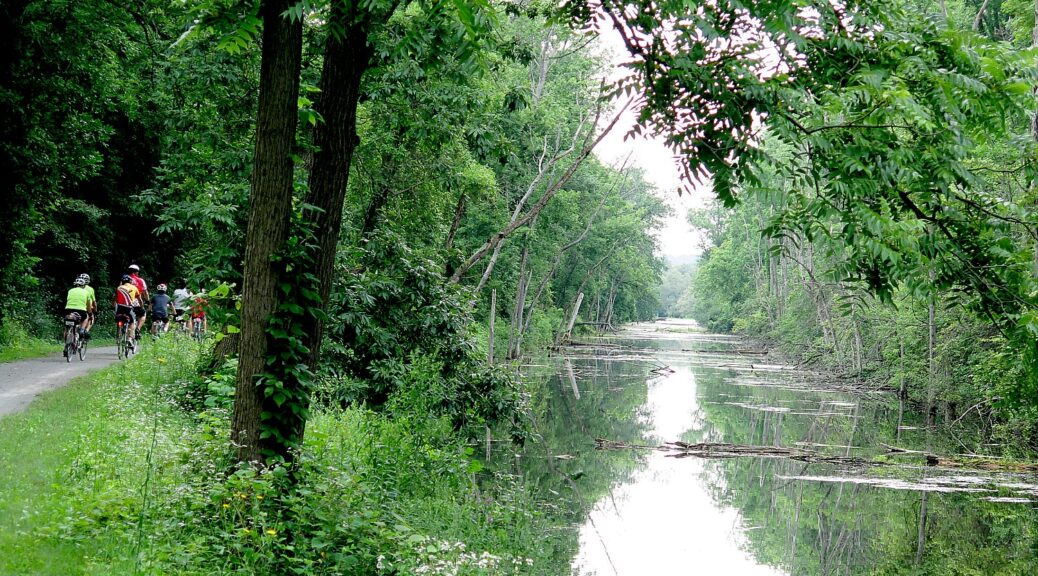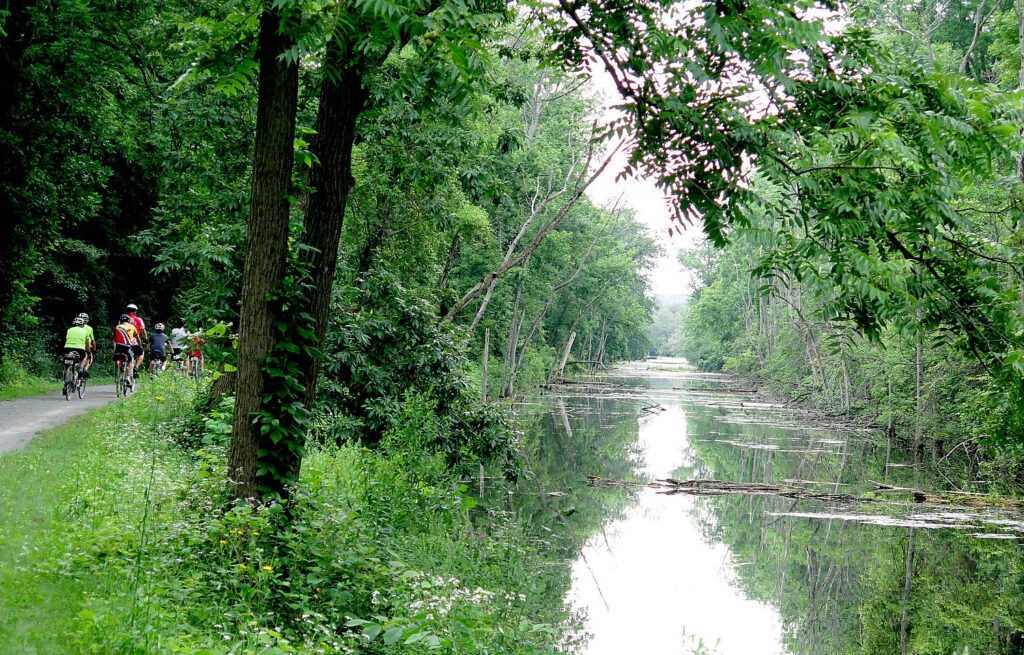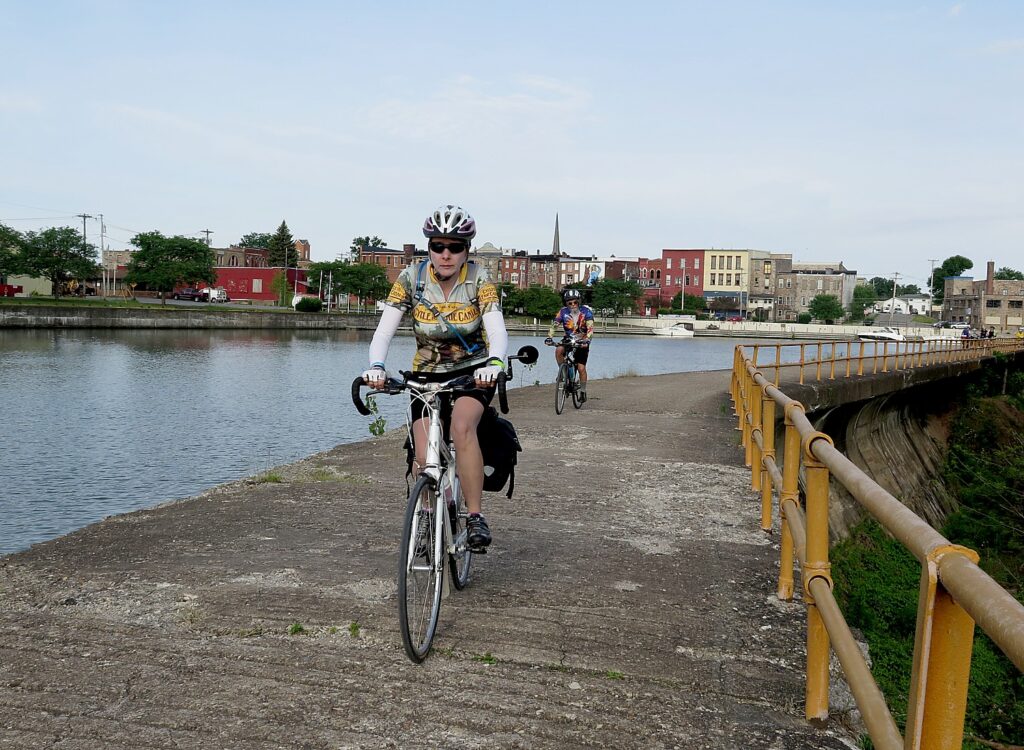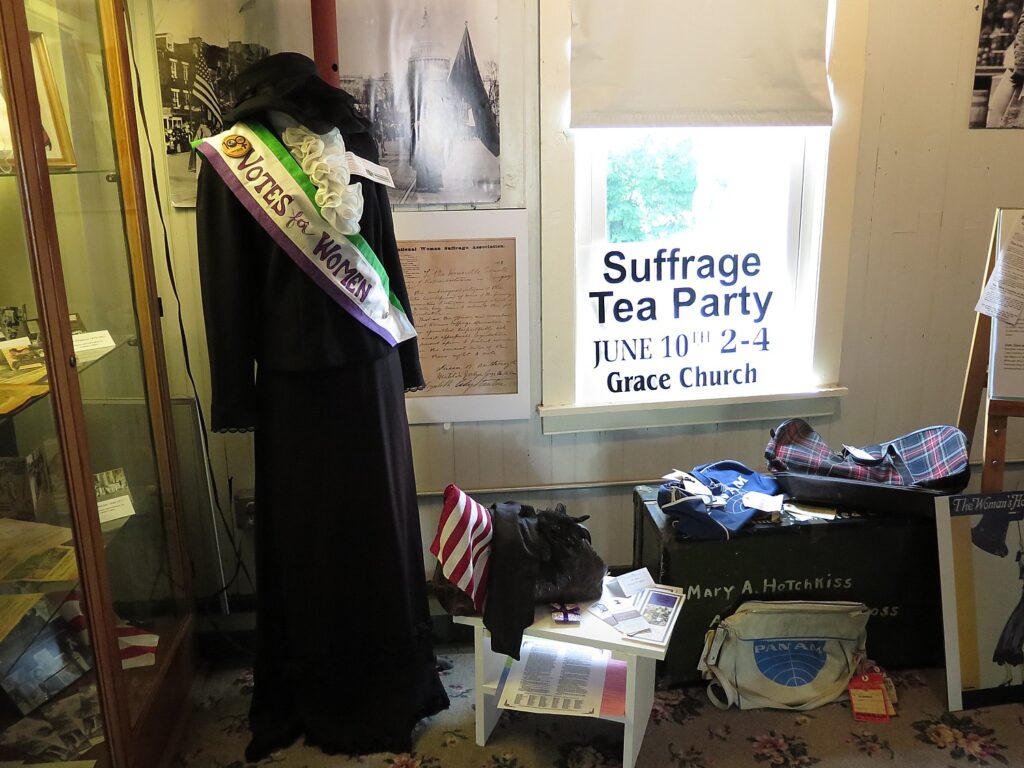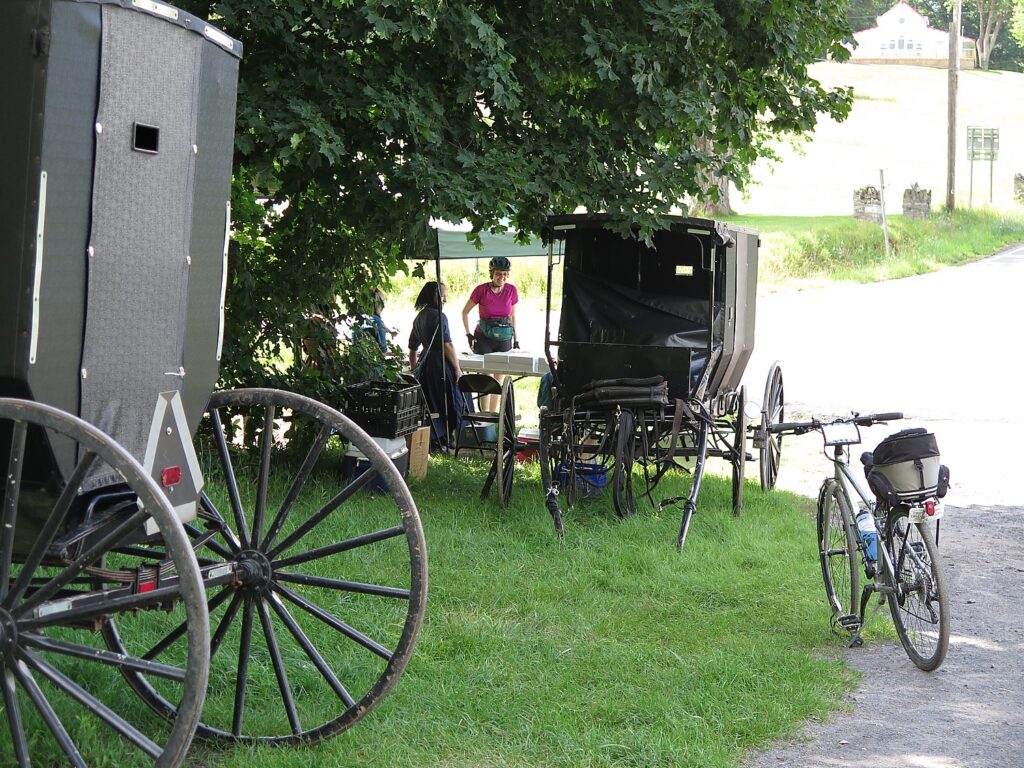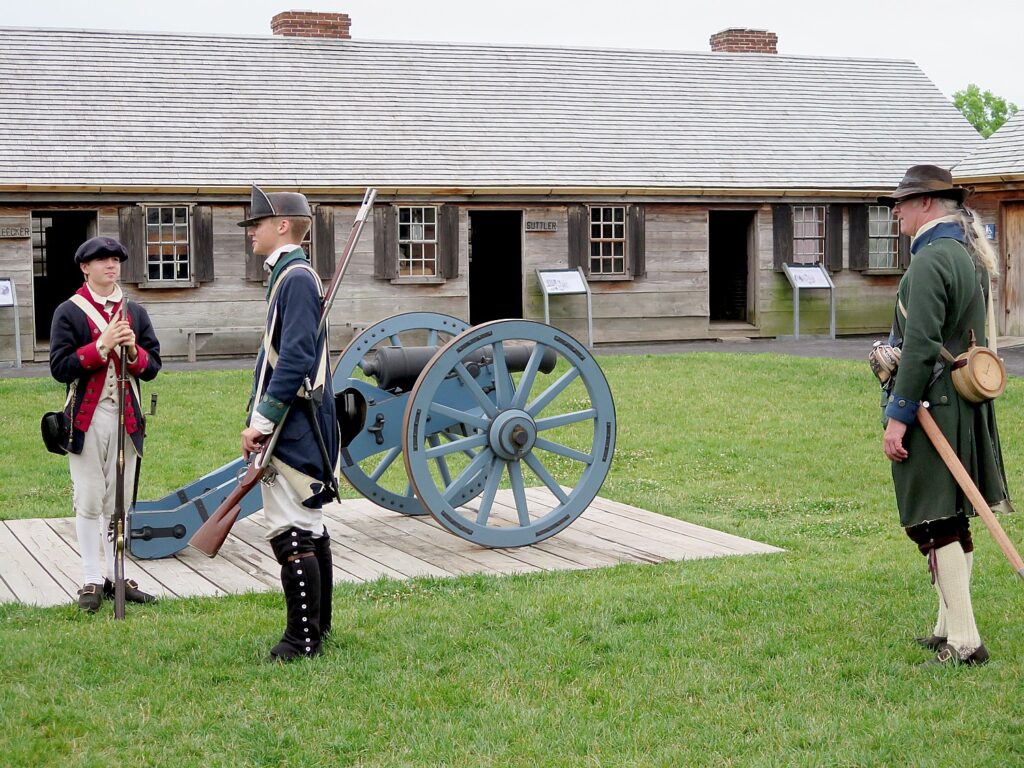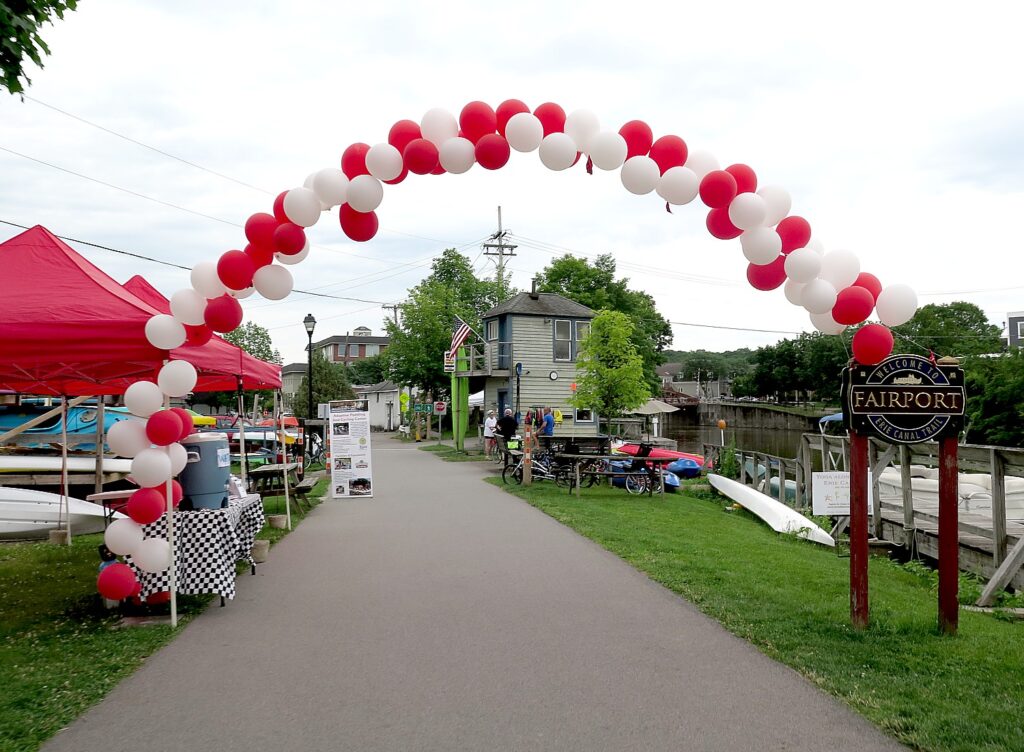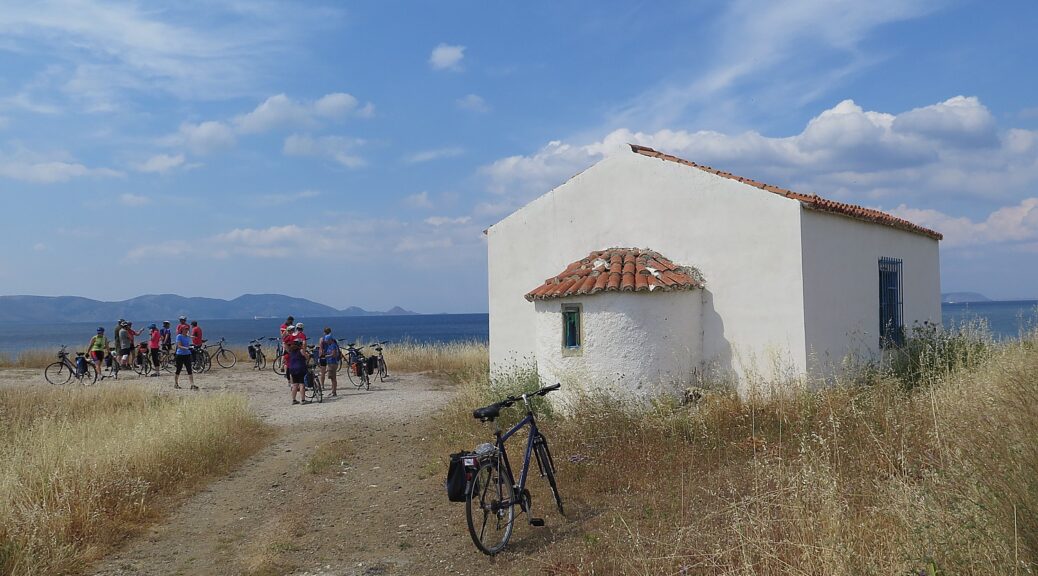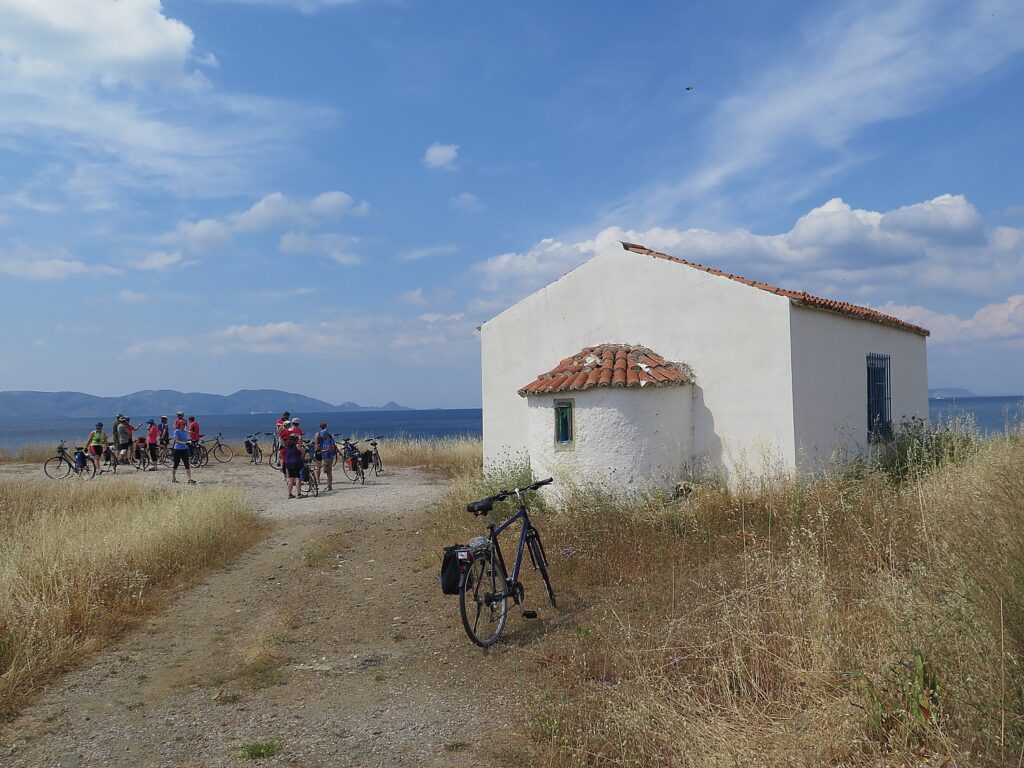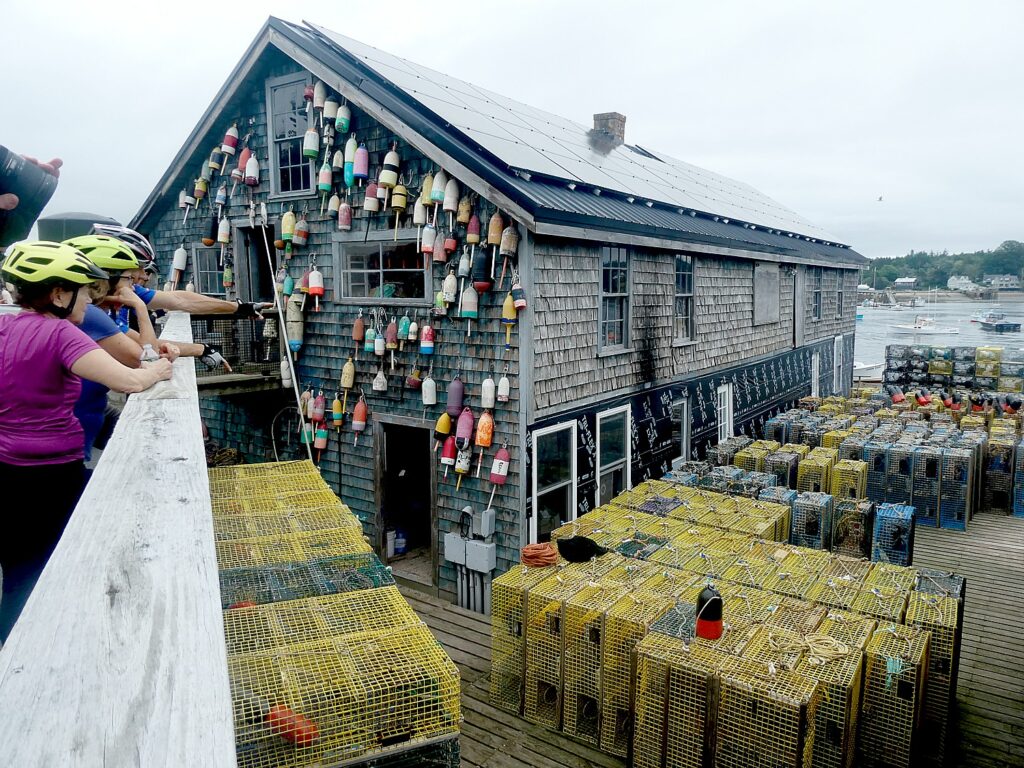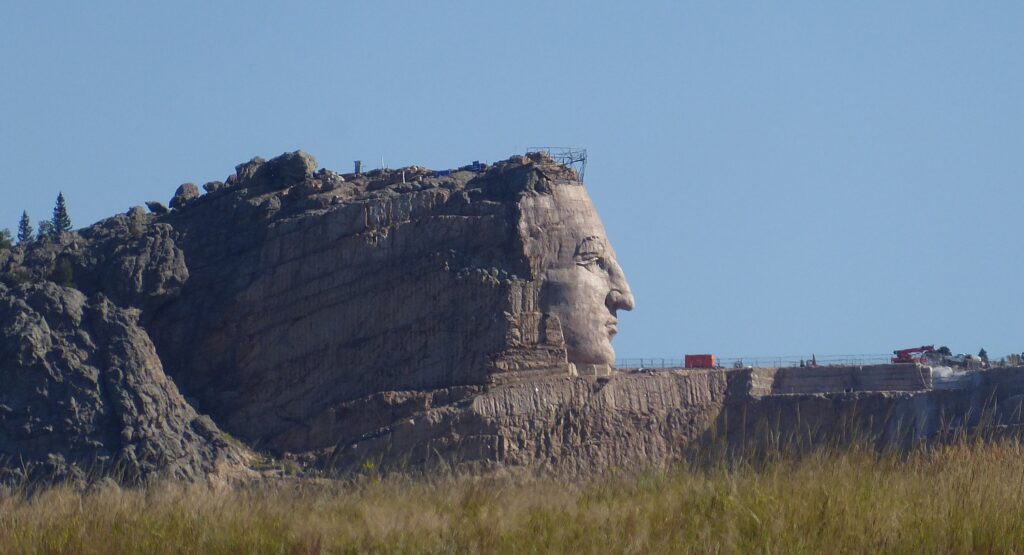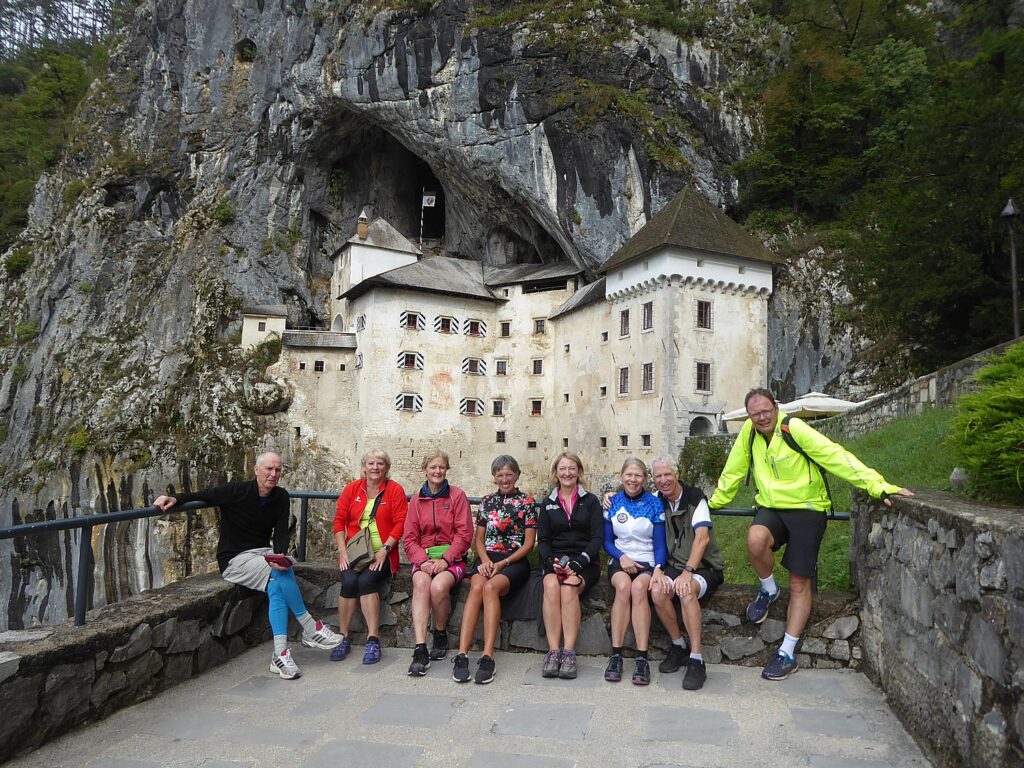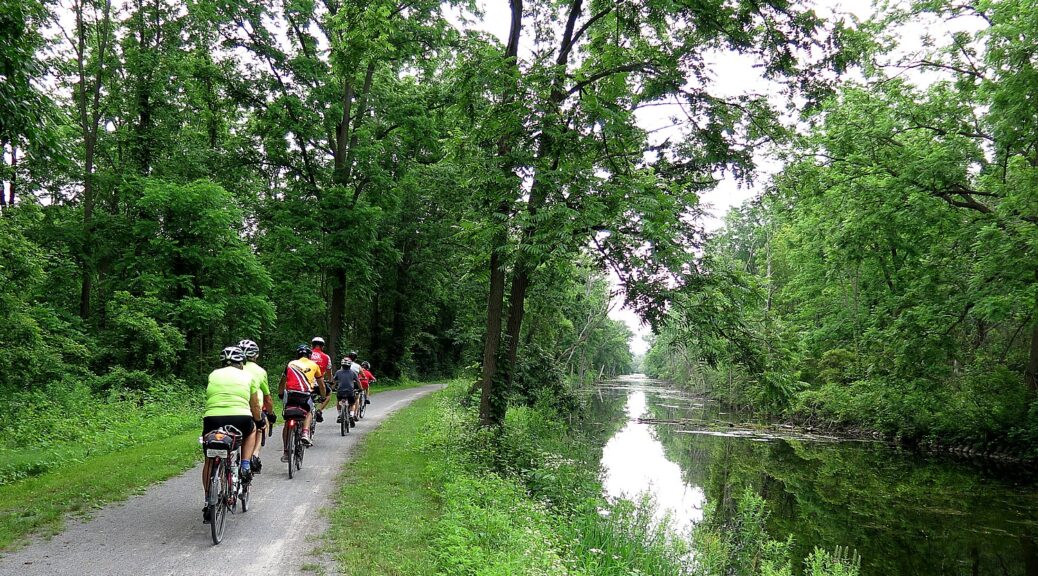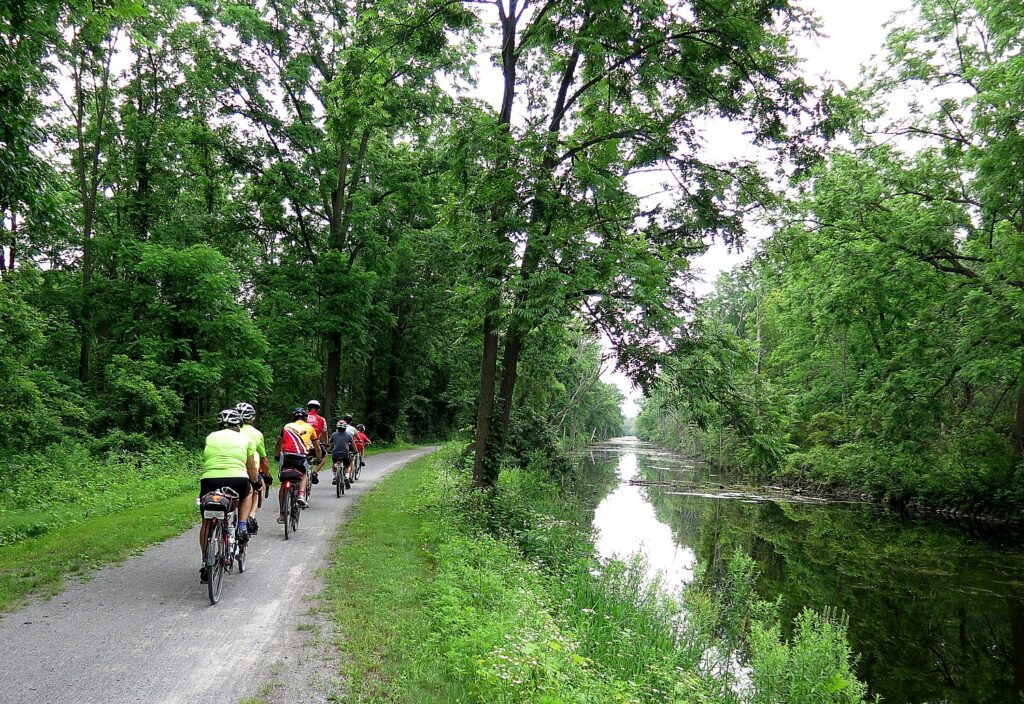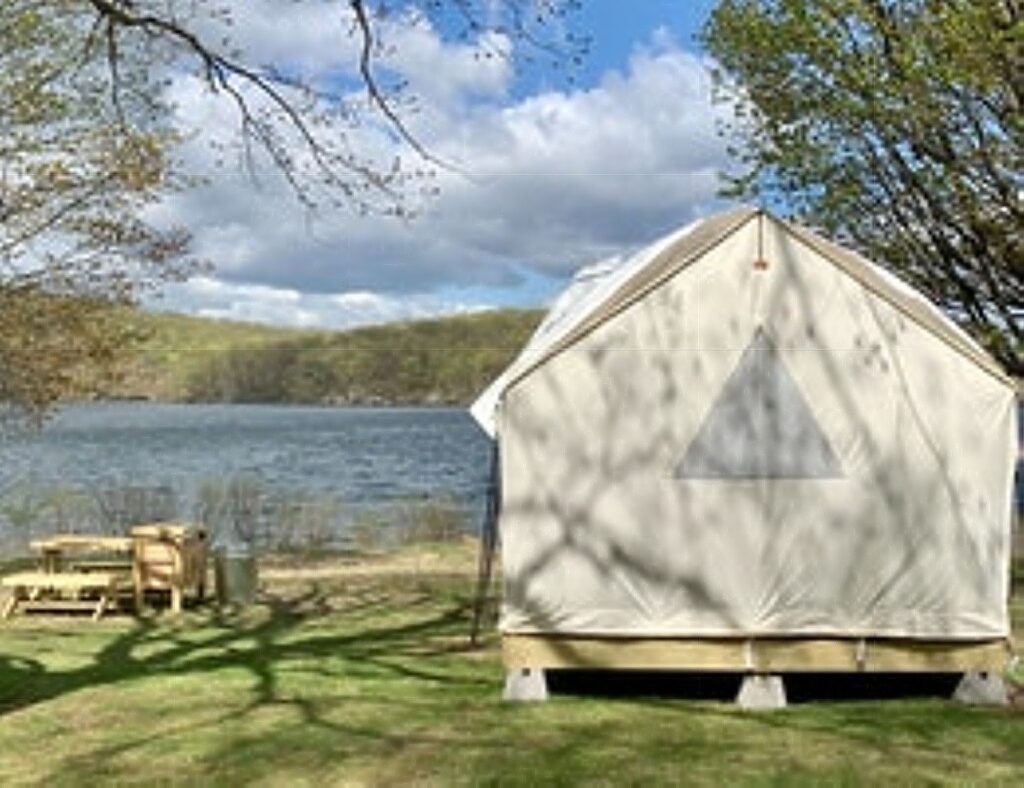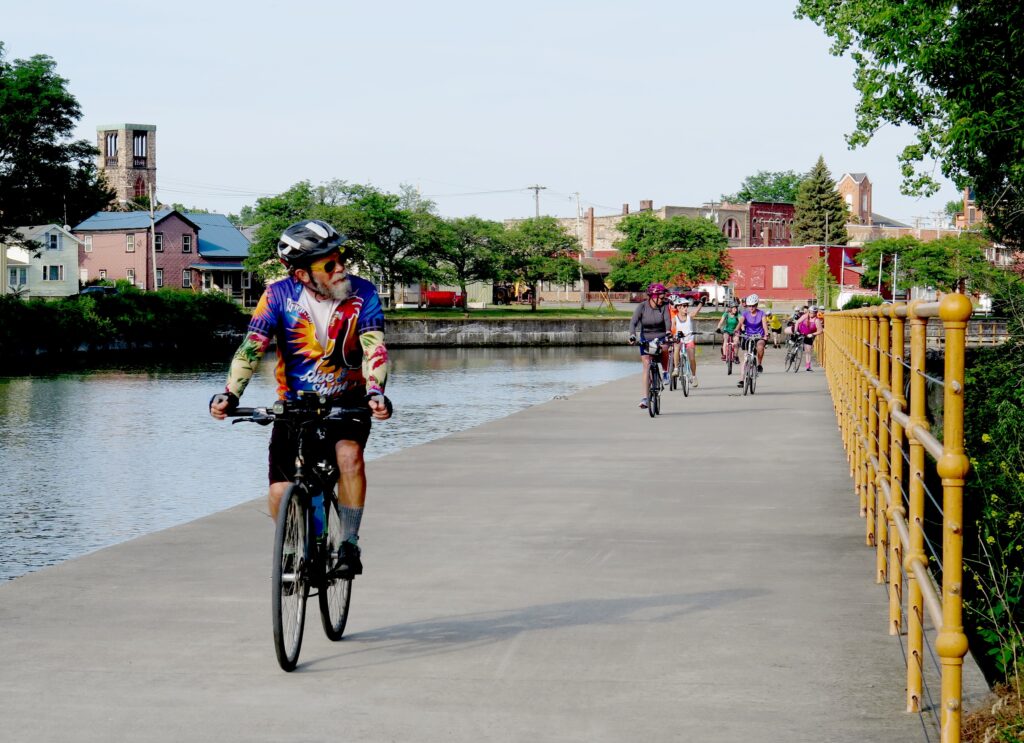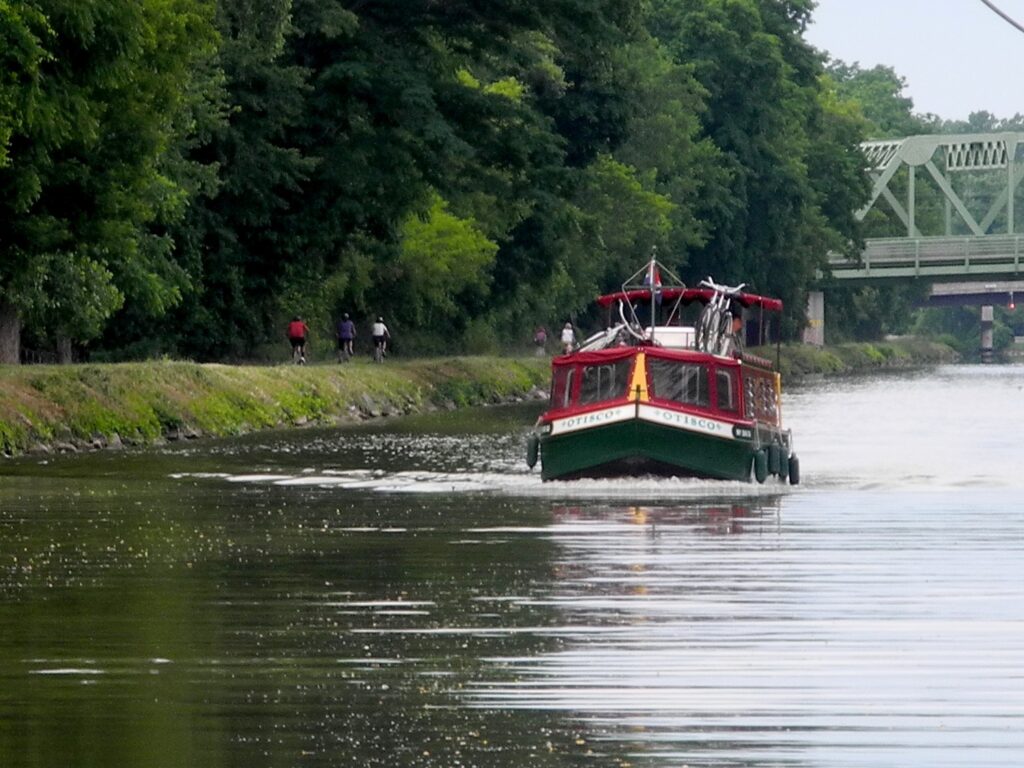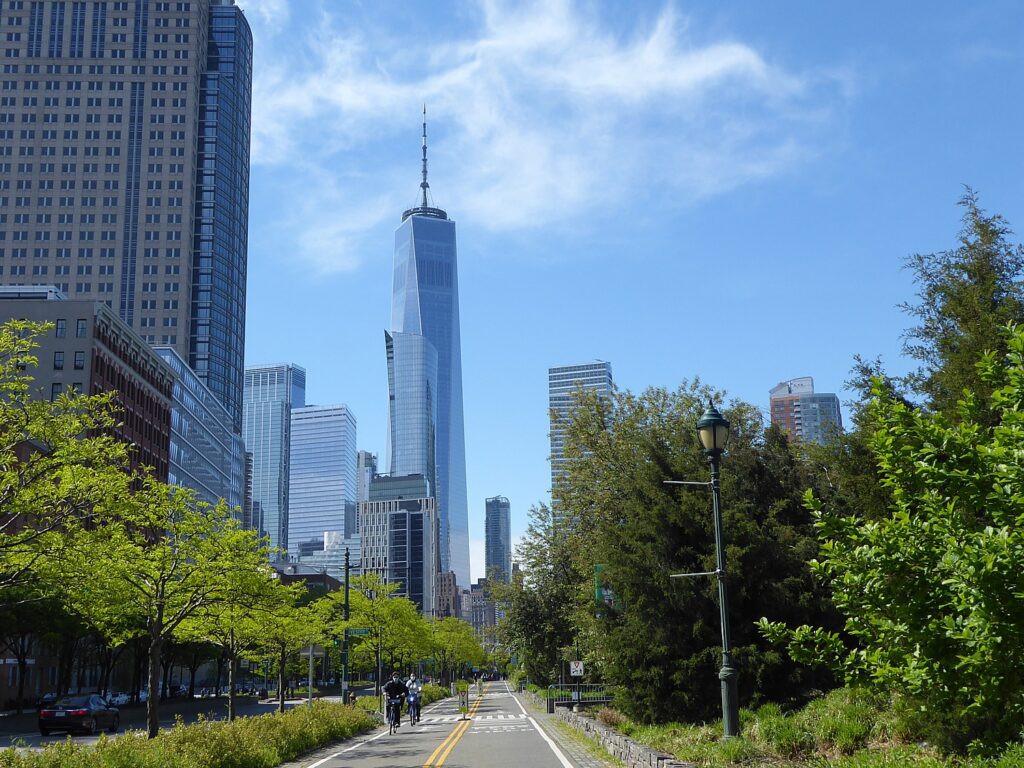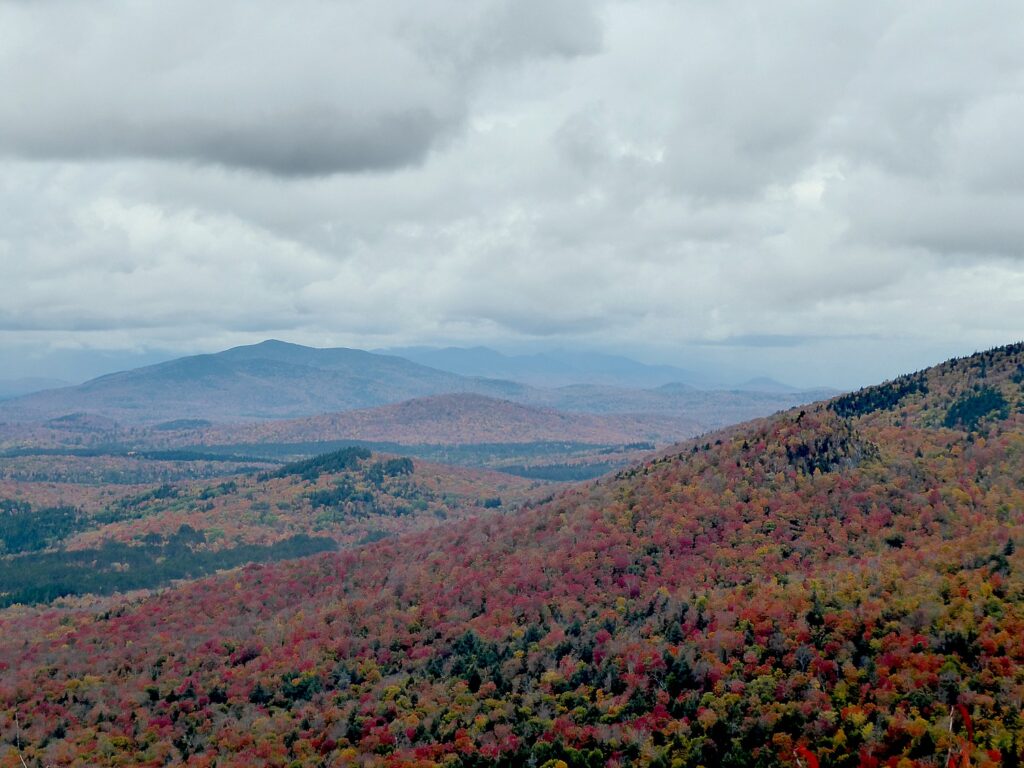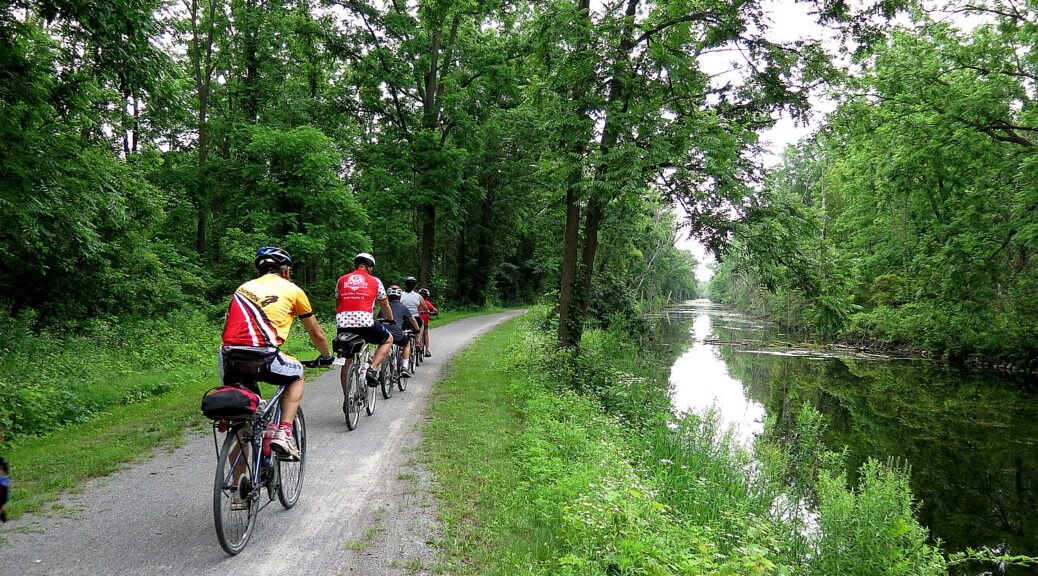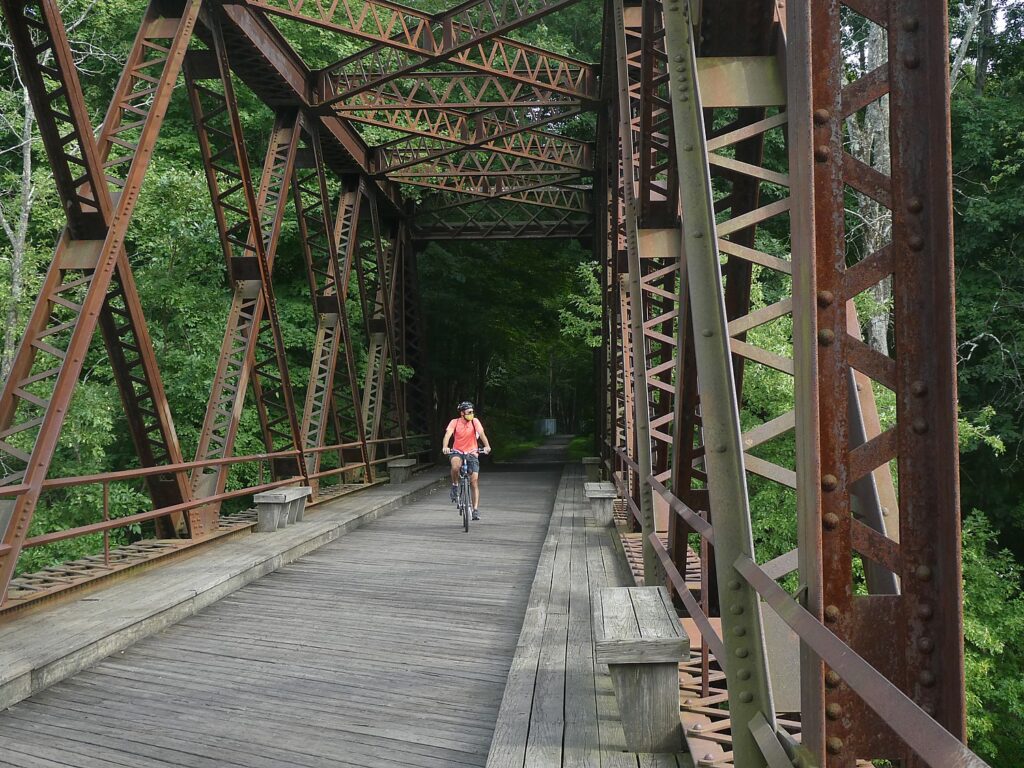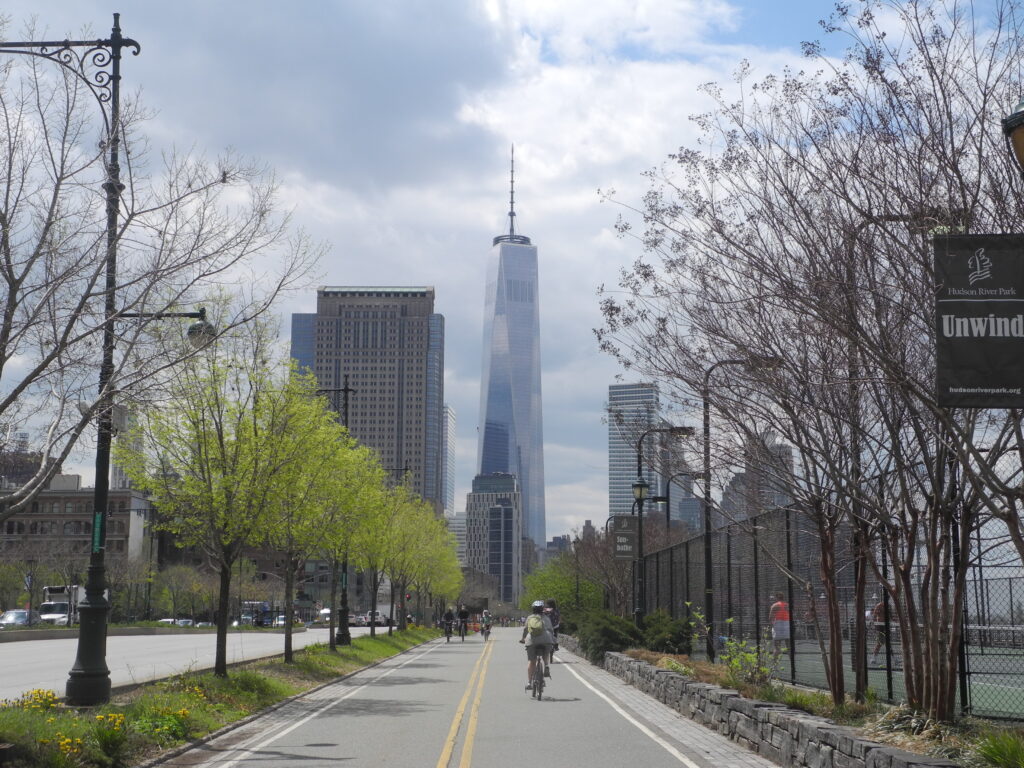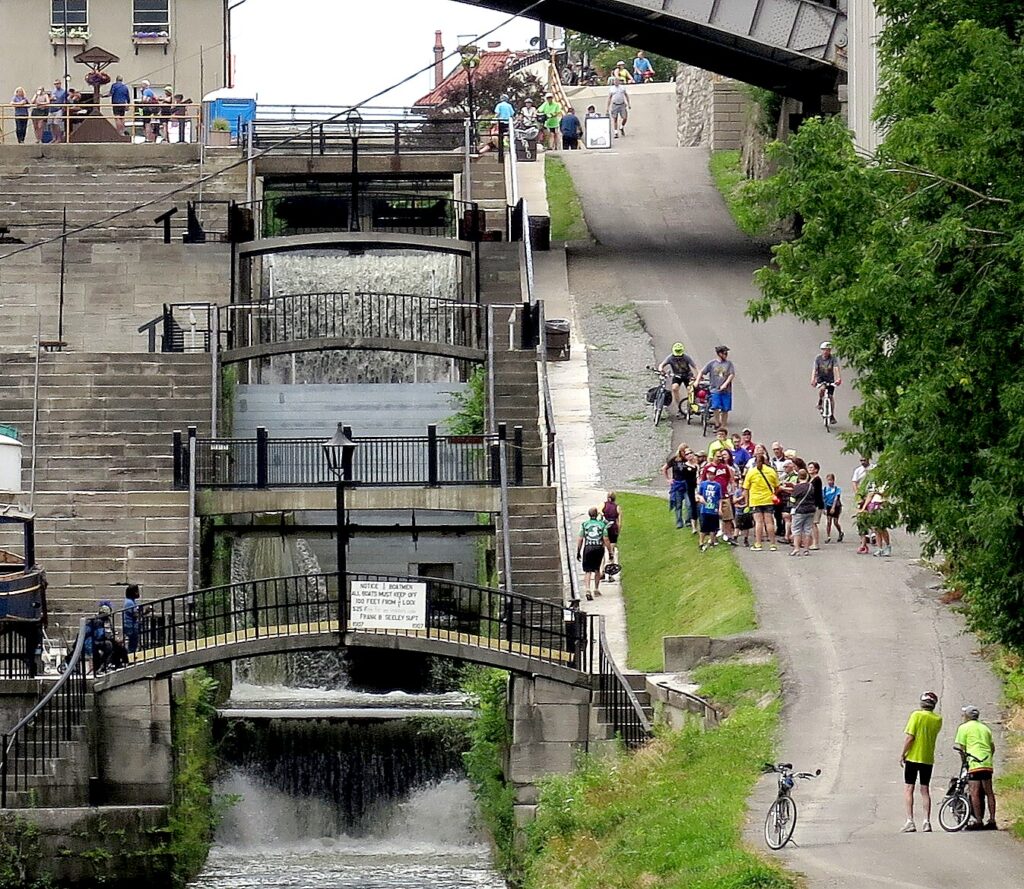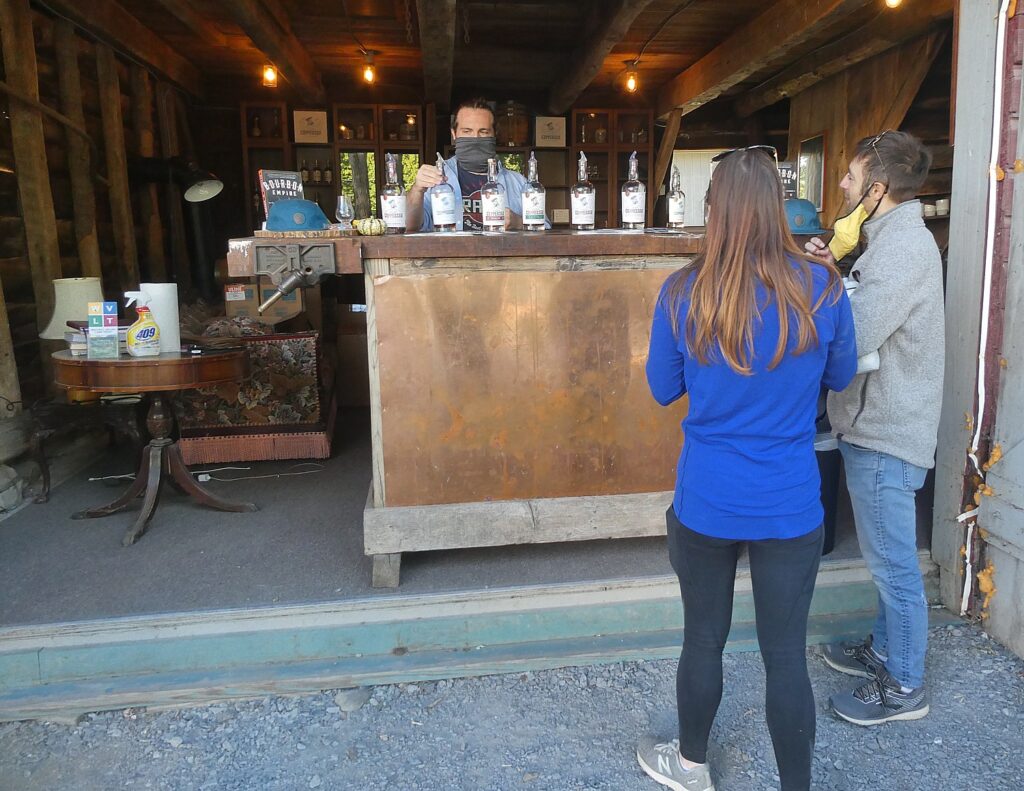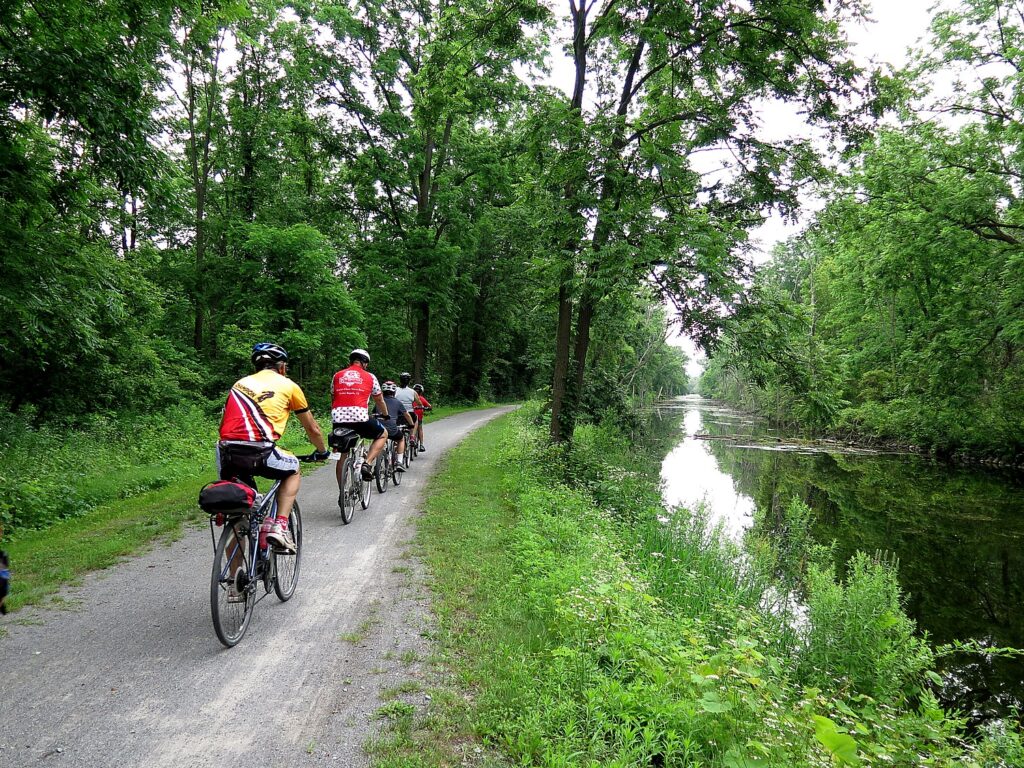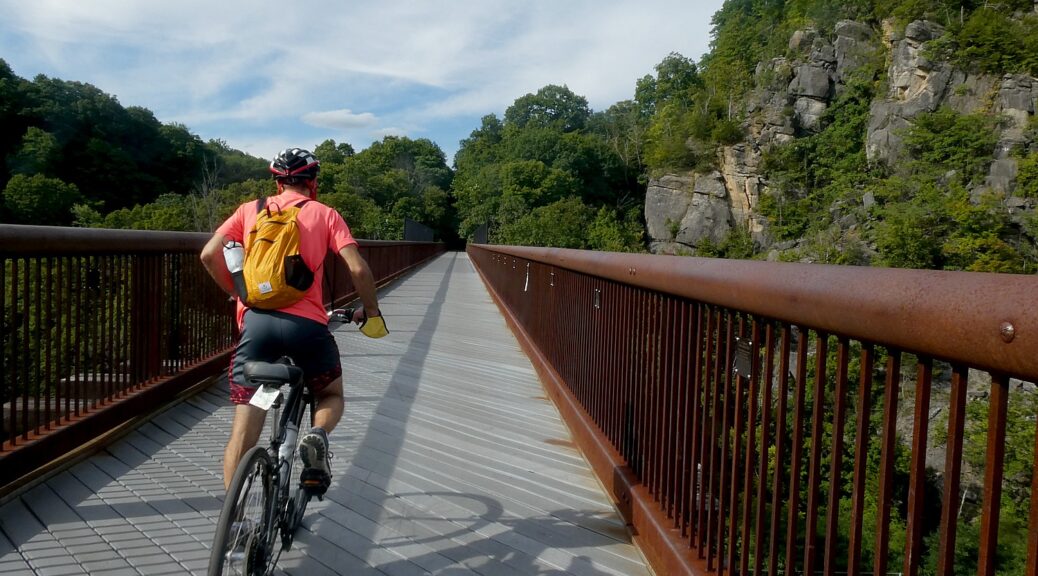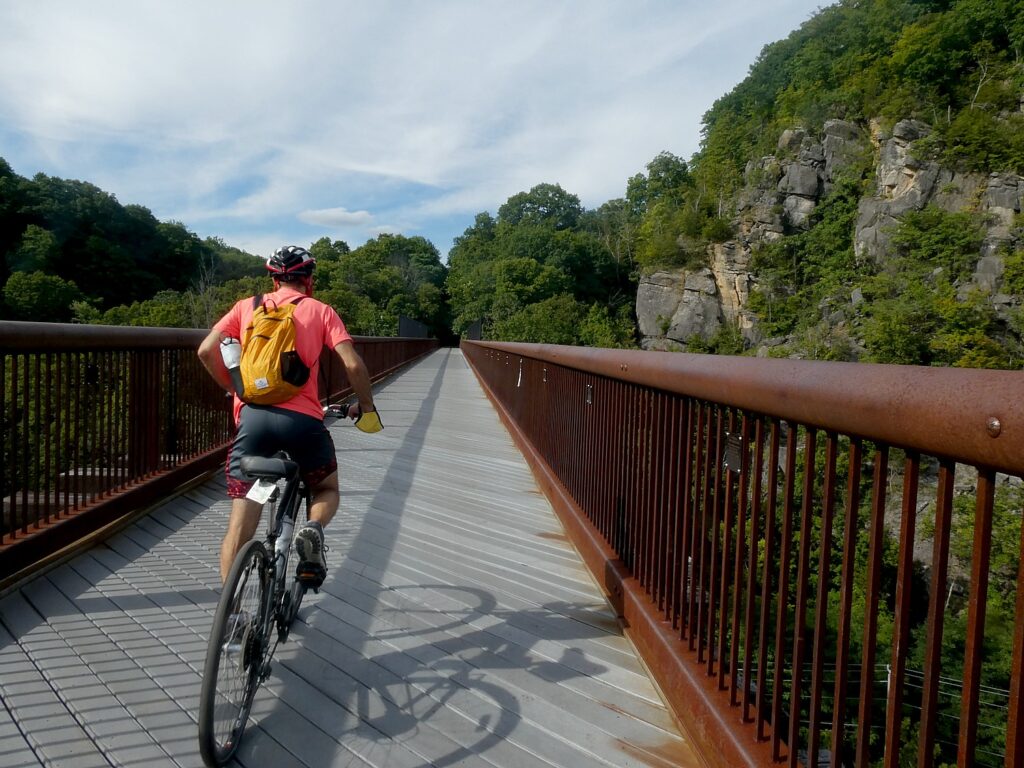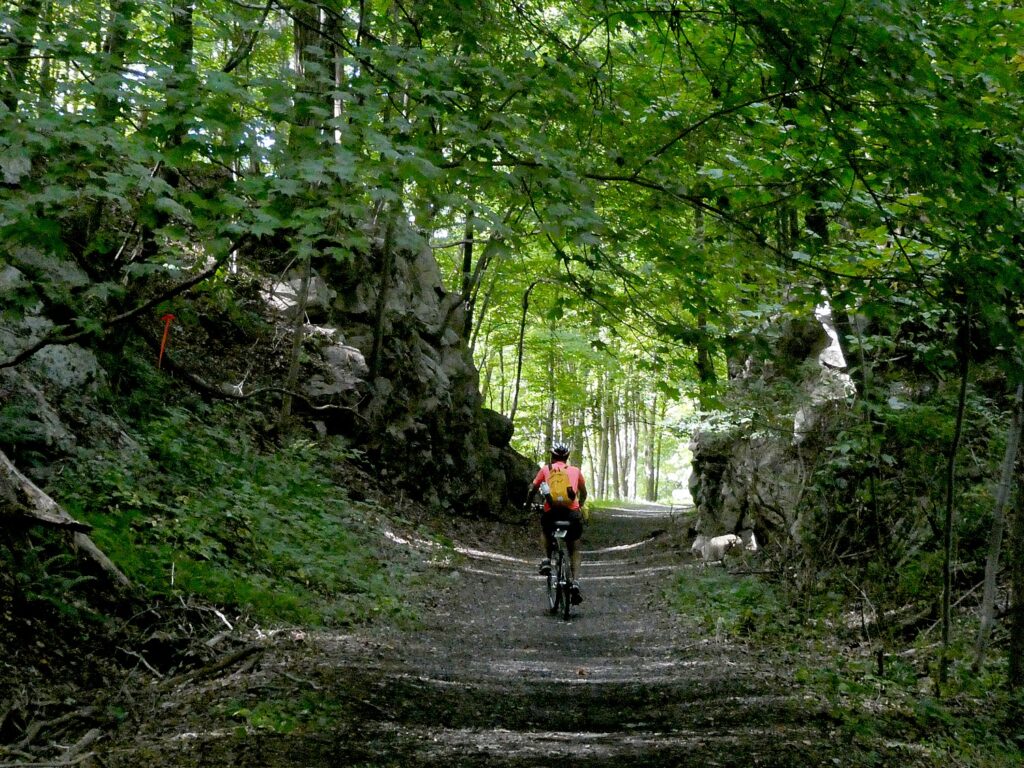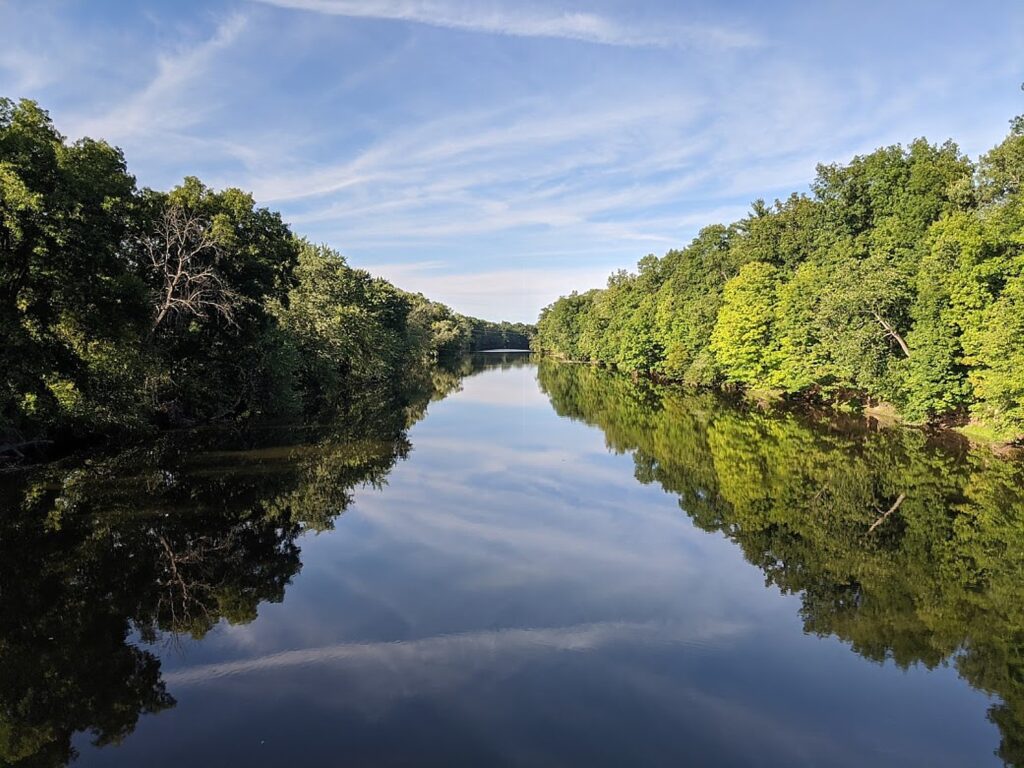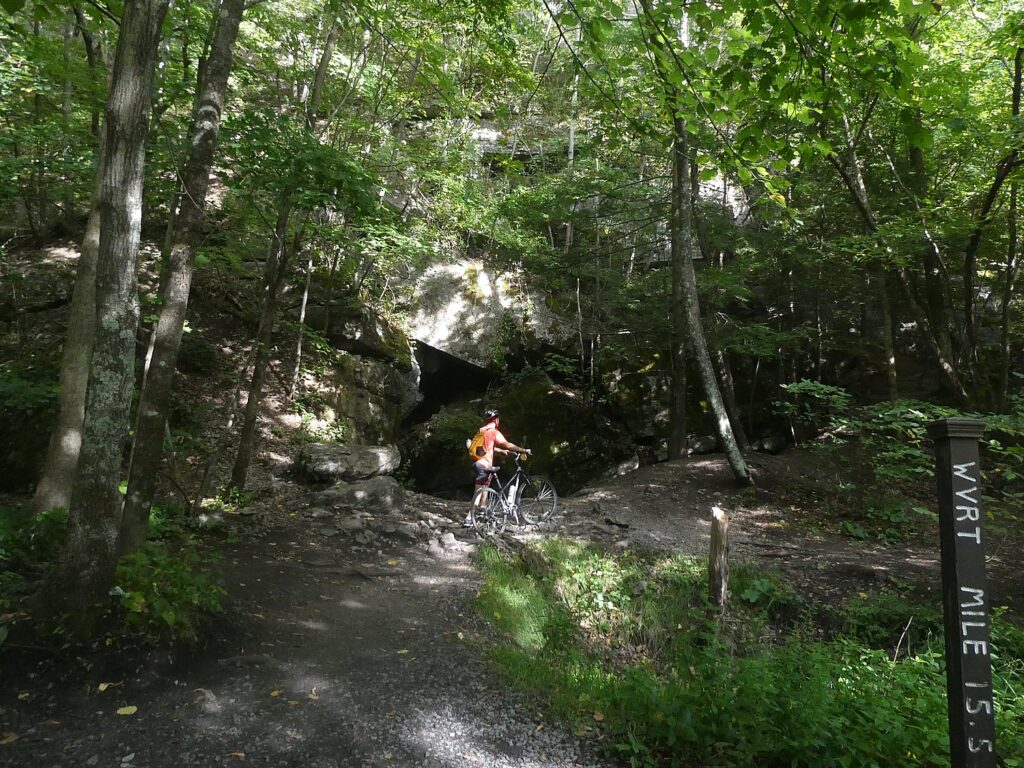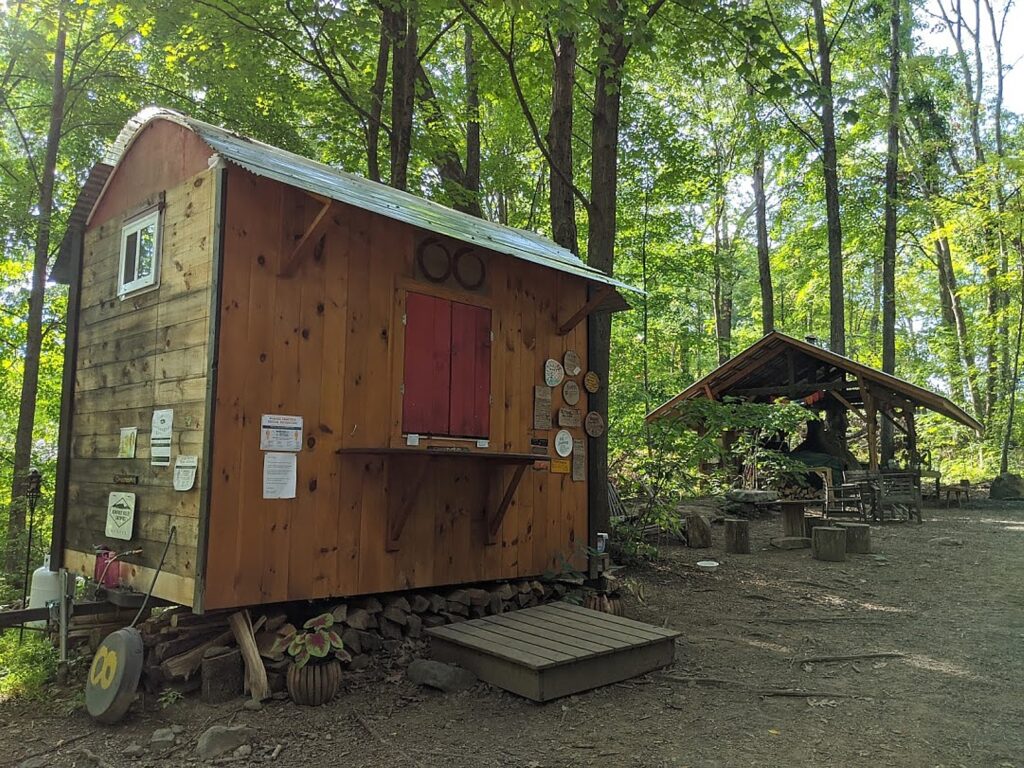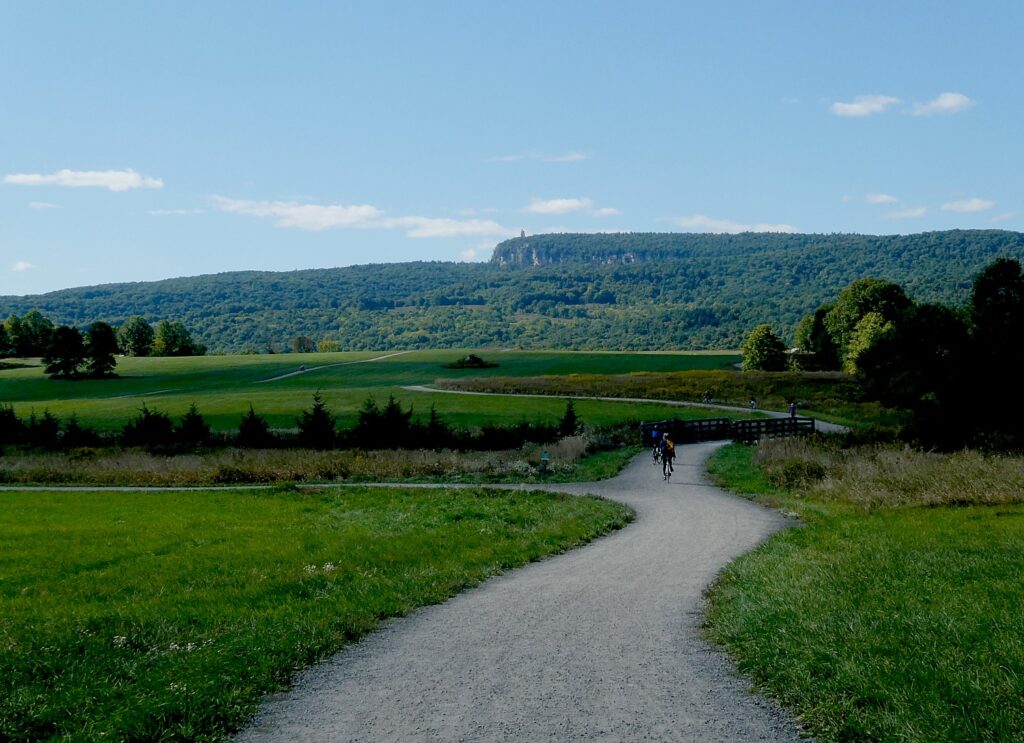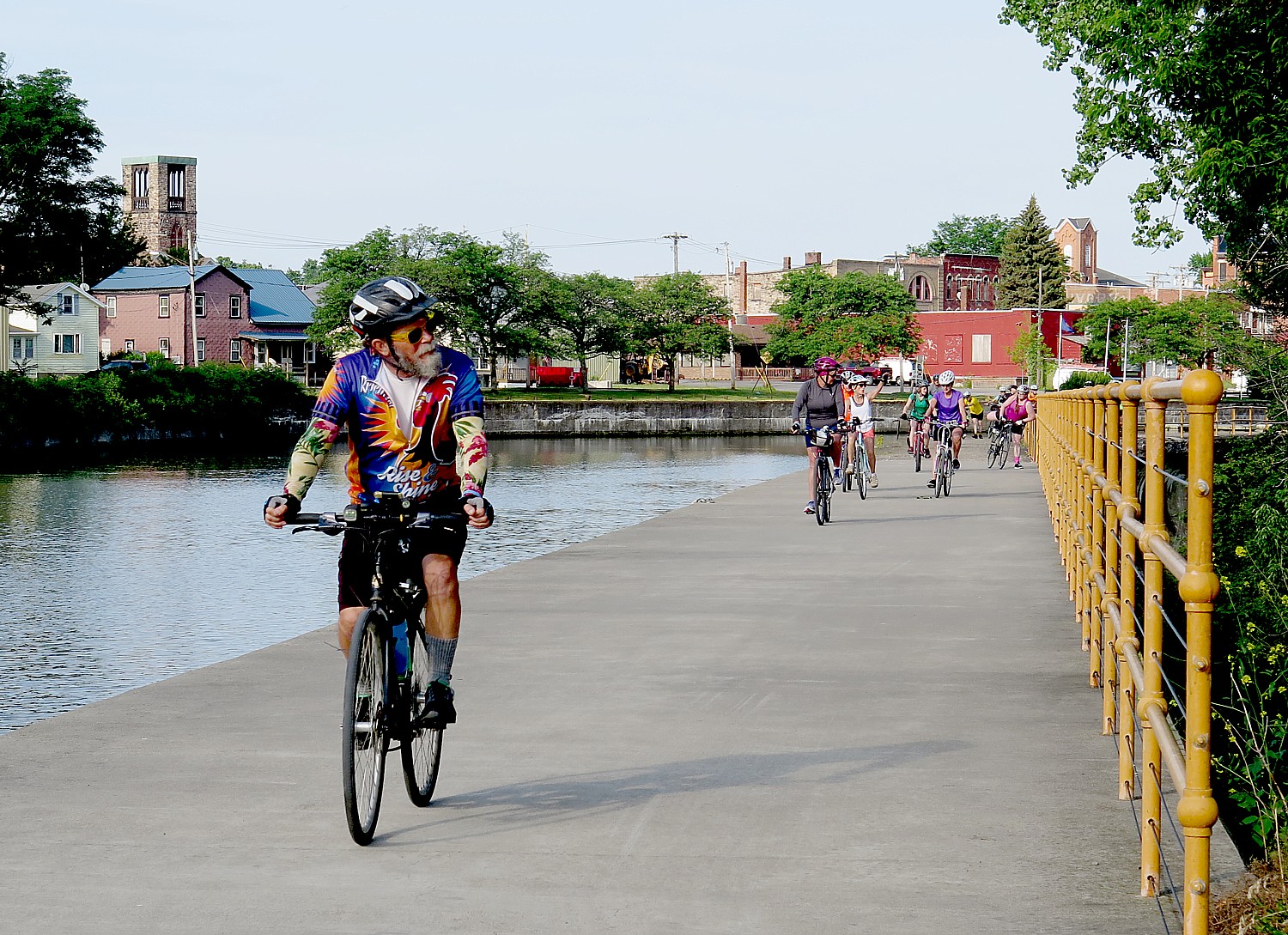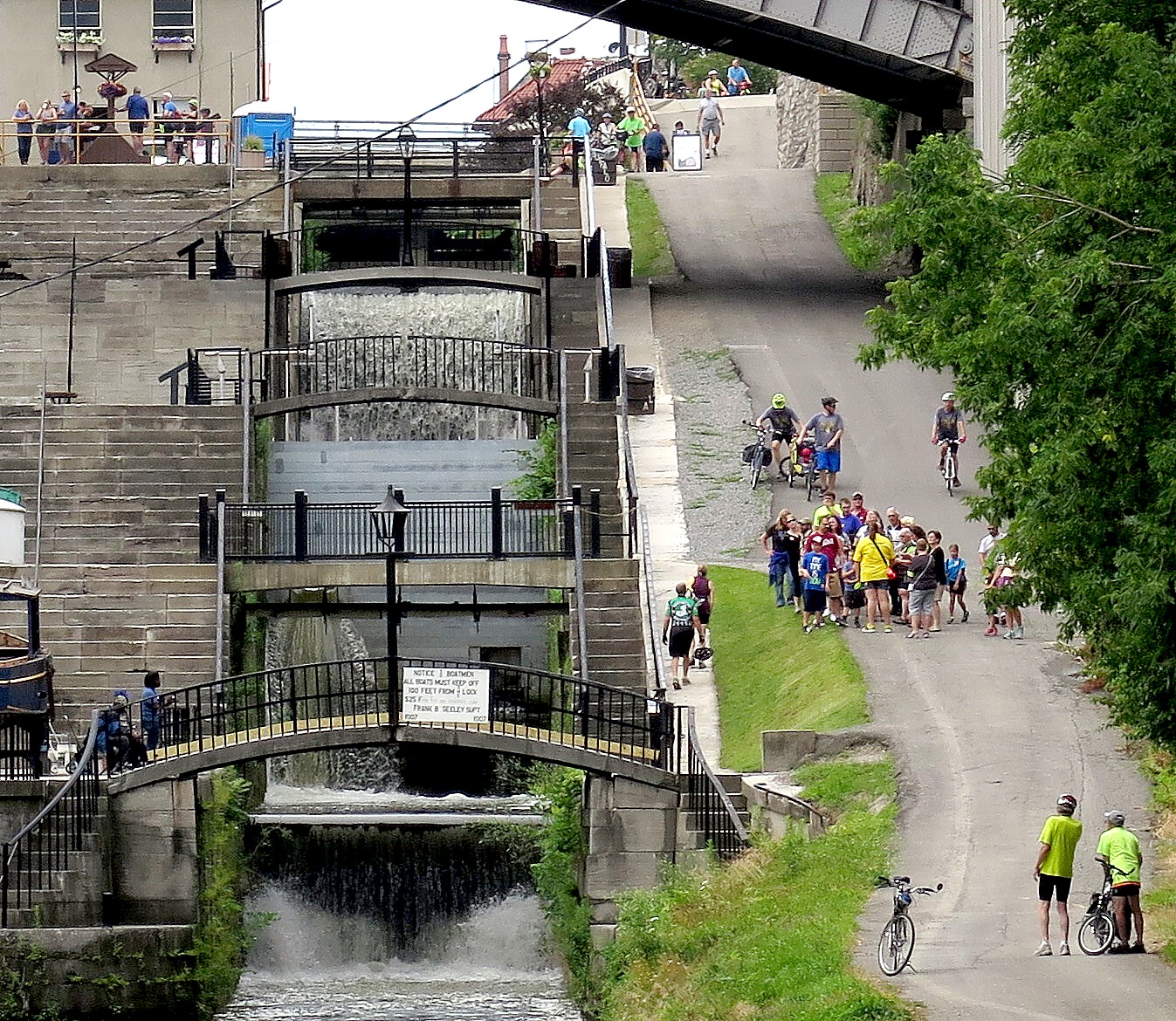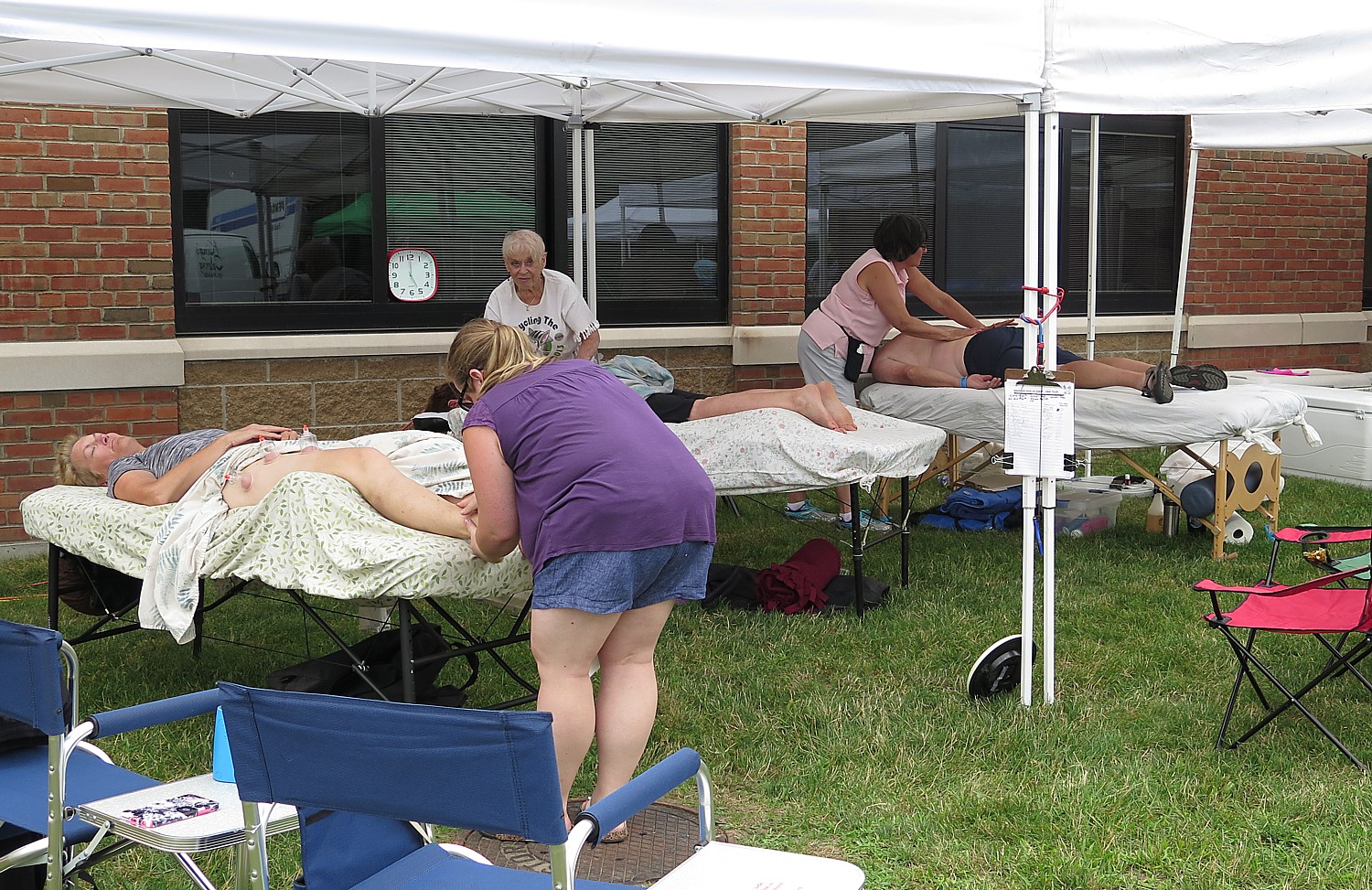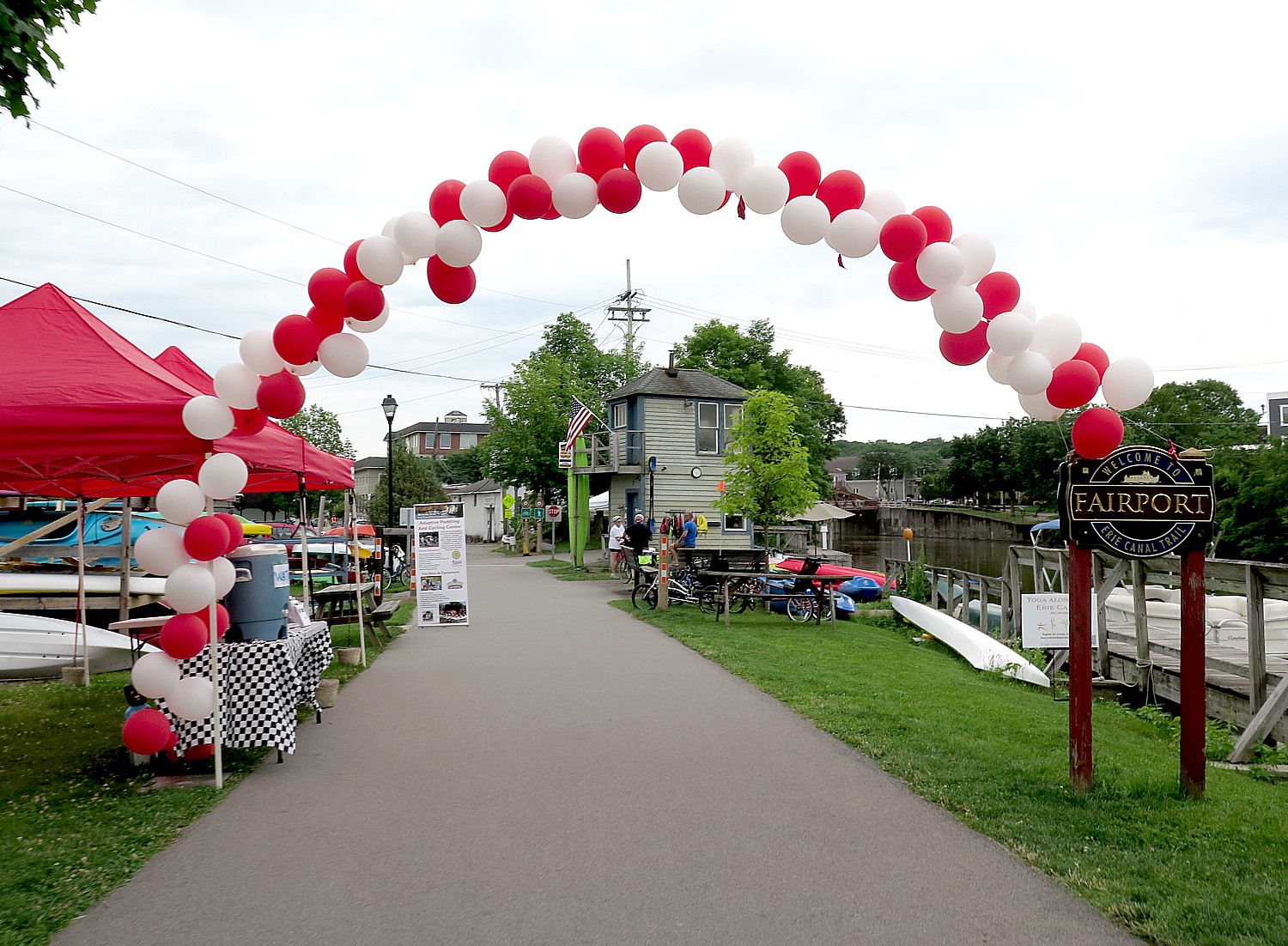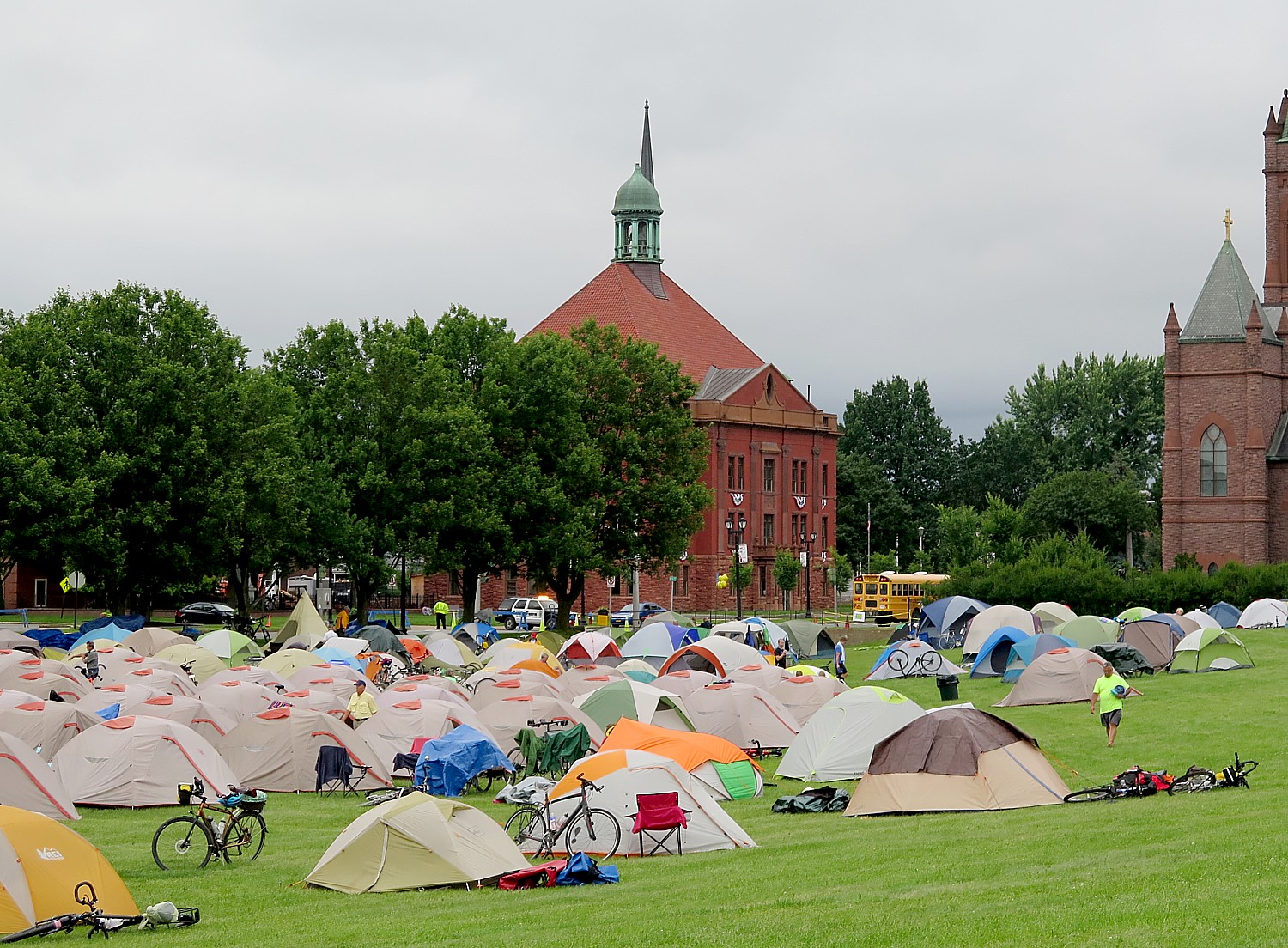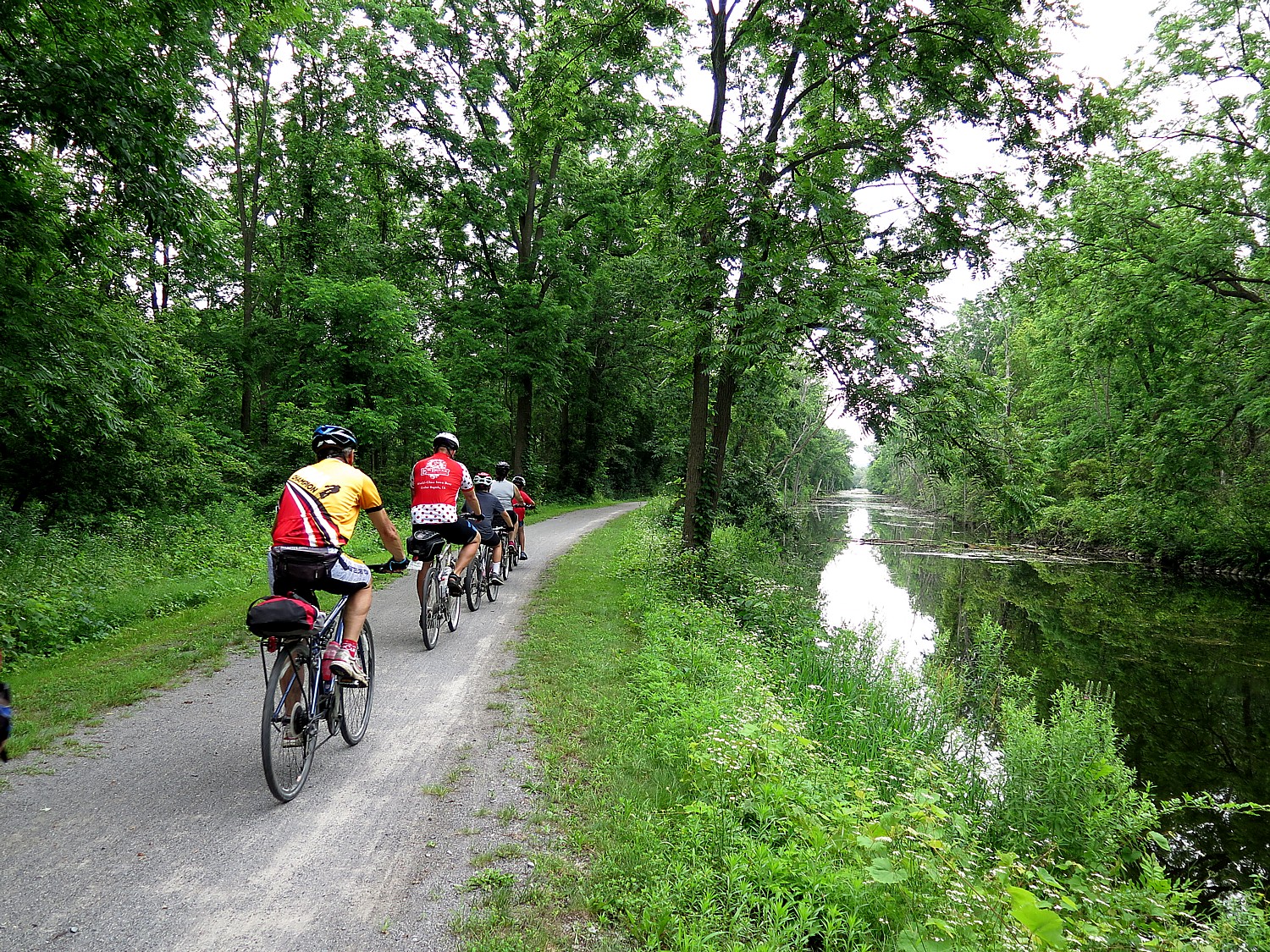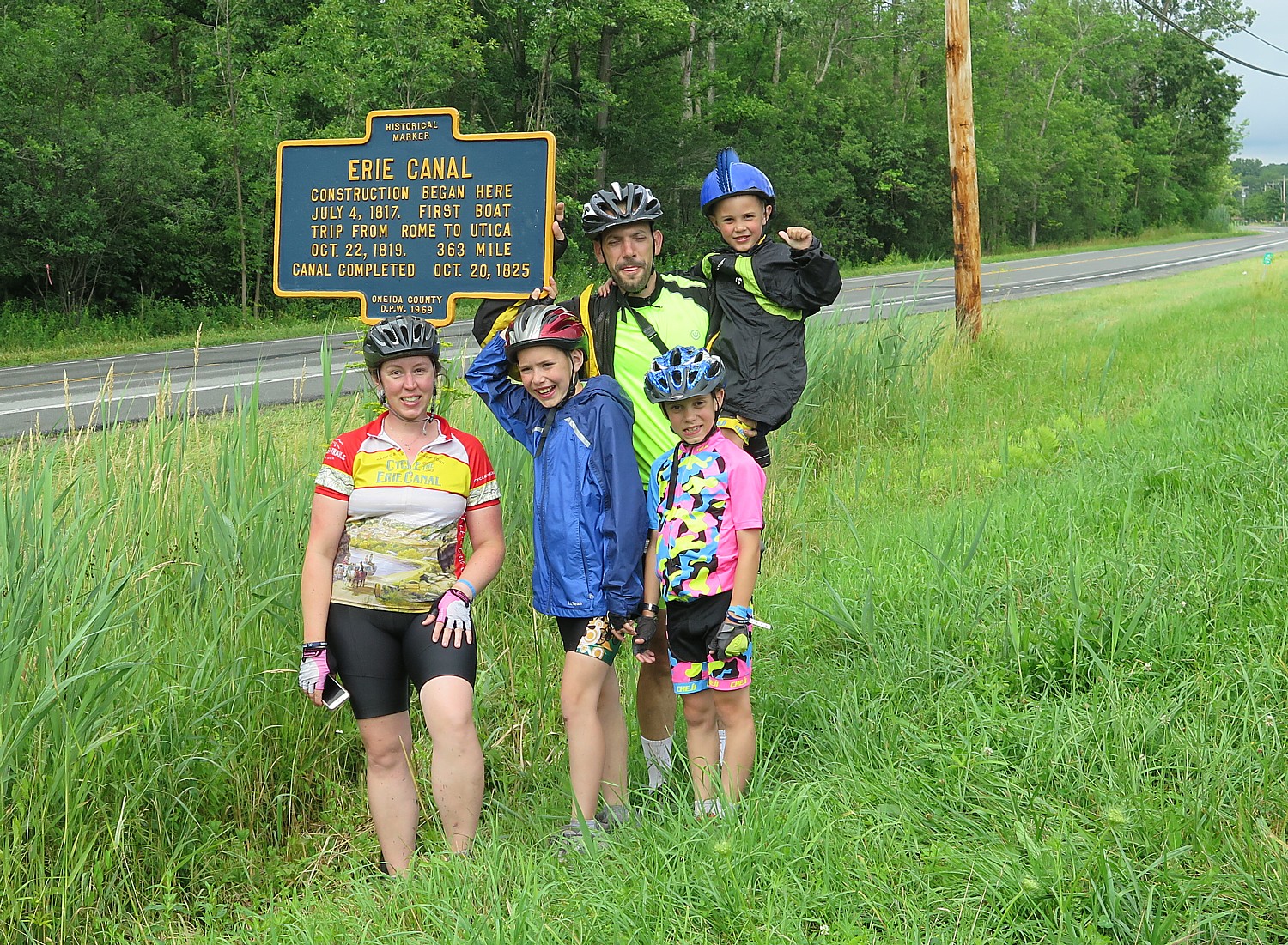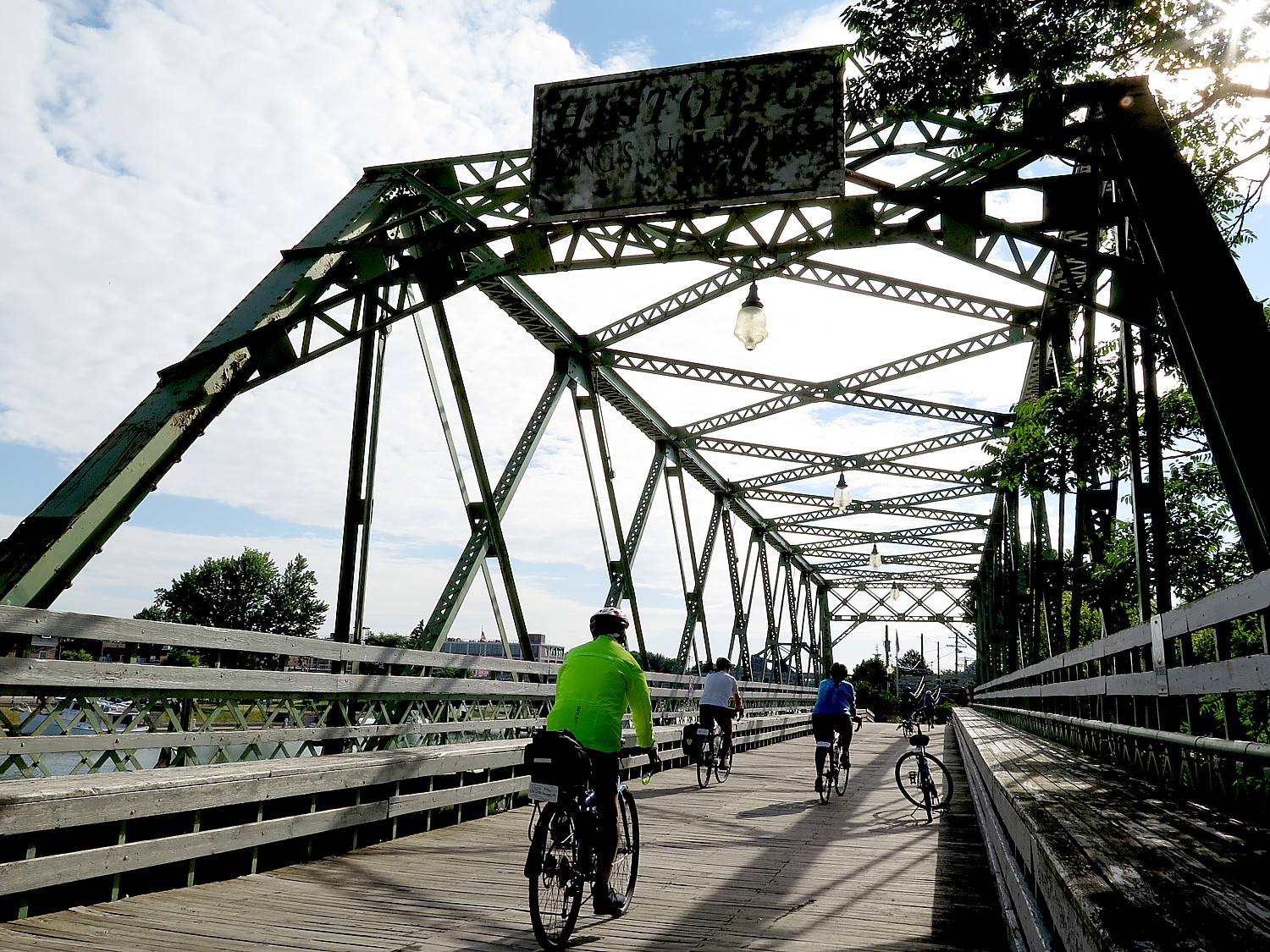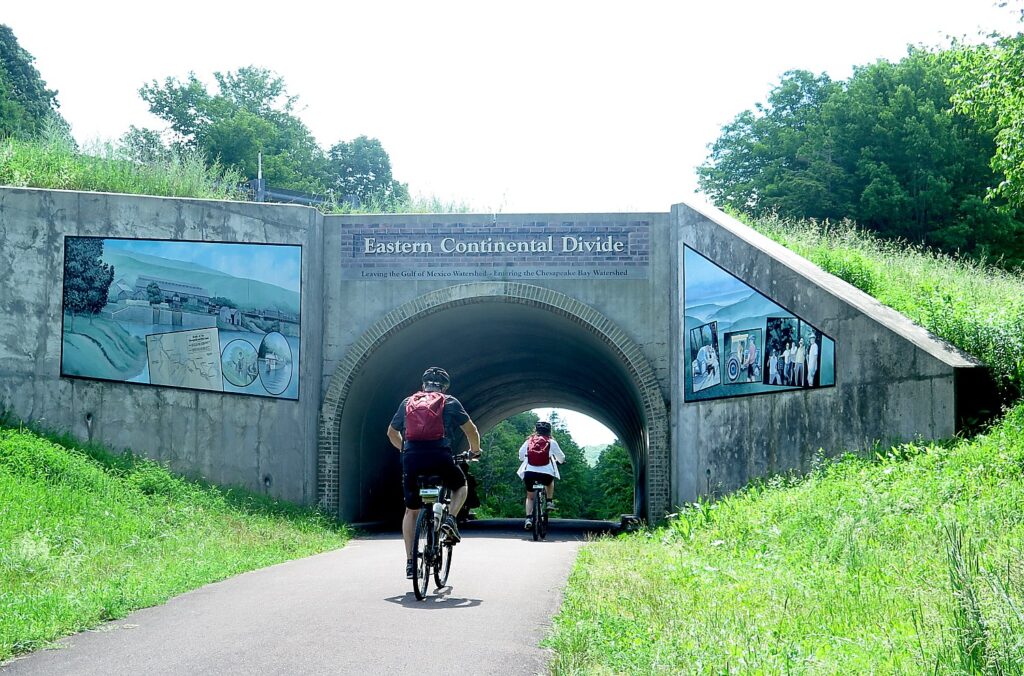
By Karen Rubin, Travel Features Syndicate, goingplacesfarandnear.com
Rails to Trails Conservancy is hosting its Celebrate Trails Day on April 26. This annual spring celebration of America’s trails, which Rails to Trails has organized since 2013 on the fourth Saturday of April, invites one and all to “come outside to experience the joy and impact of America’s trails”.
Every Celebrate Trails Day, RTC teams up with partners—trail groups, agencies, nonprofits, businesses, brands, clubs and every other type of organization in between—to offer scores of events and activities that encourage physical activity, stewardship, community engagement and opportunities to see how fun it is to switch a car trip for a walk or a bike ride and help lower their individual carbon footprint.
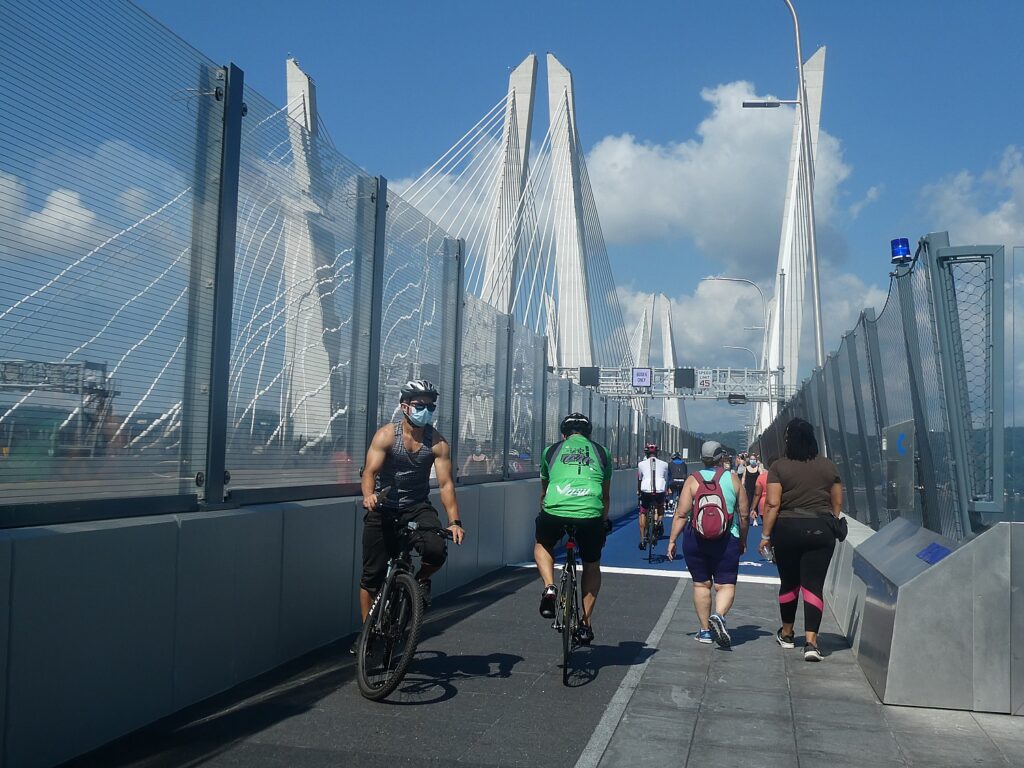
“Celebrate Trails Day creates a unique opportunity to show off the many ways trails are essential to communities across the country,” said Ryan Chao, RTC’s president. “Thousands of people get outside with us to send the message that when we connect trails, good things happen.”
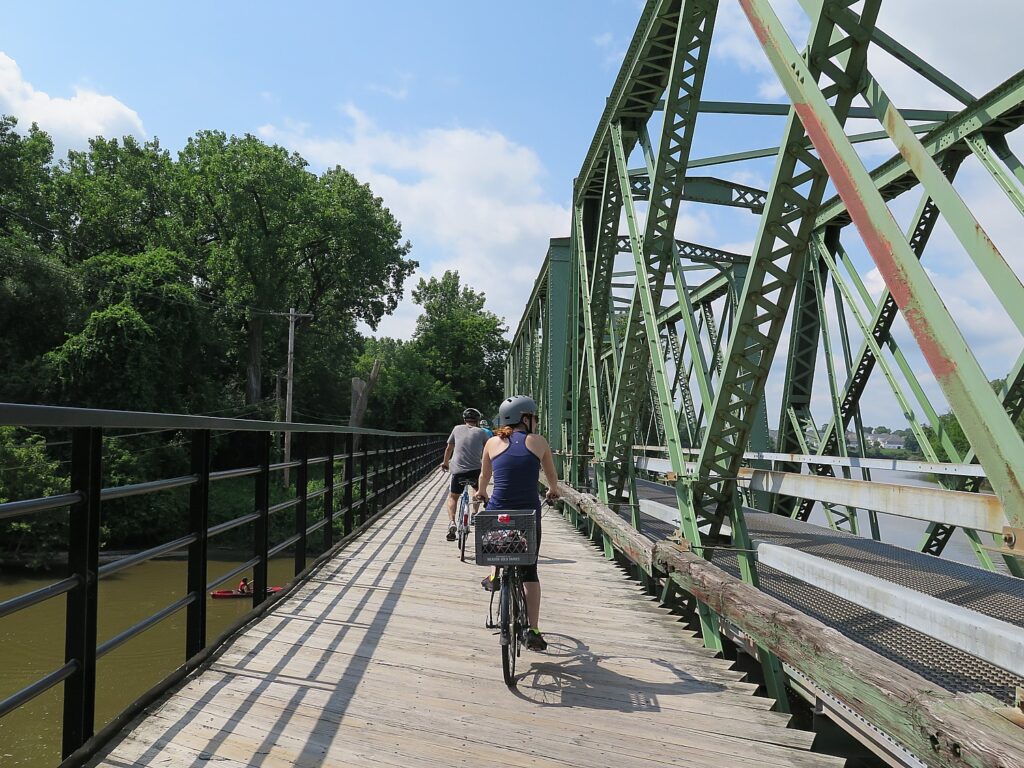
What good things? “The nation’s 42,000+ miles of multiuse trails on the ground nationwide lay the foundation for 150+ trail networks in development means we have space to move our bodies and be active outside, which is good for our physical and mental health. We support our local economy and create new connections in the neighborhoods where we live. And we can get around safely without a car. These spaces bring incredible value to our everyday lives, improving the quality of life where people live, work and play. When we show up on trails, we send a message loud and clear that these spaces are essential to our communities.”
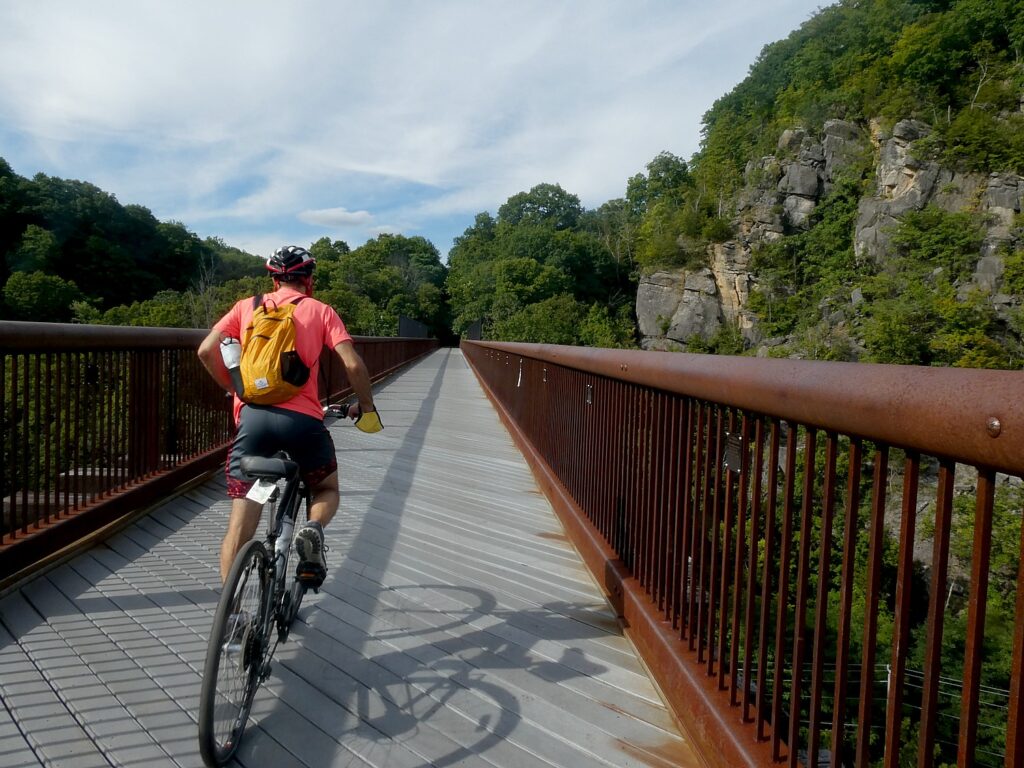
RTC has curated resources to help you plan a day of biking, walking, hiking, running and/or exploring outdoors. These include an interactive map to find events near you (more events being added all the time). Using the map, you can find hikes, spring cleanups, group rides, fun runs, family-friendly festival. You can also find organizations hosting events and events where complimentary non-alcoholic beverages are being provided, courtesy of Athletic Brewing Company, the premier sponsor for Celebrate Trails Day. Go to the website, https://www.railstotrails.org/celebratetrailsday/. (You can also find out how to win prizes for participating.)
Find Trails: Any day of the year, you can find trails near you around the nation using RTC’s free trail-guide app and website, TrailLink.
Impact of Trails for People, Places and the Planet

Many of the more than 240 events taking place on Celebrate Trails Day highlight the return on investment as the nation’s more than 41,000 miles of multiuse trails are connected into trail networks that make it safer and easier for people to be active outside where they live, with the potential to deliver more than $138 billion to the economy each year in health cost savings, climate savings and direct spending.
Last year’s Celebrate Trails Day was a celebration of unprecedented opportunity for trails, walking and biking – in part made possible by the Biden Administration’s Bipartisan Infrastructure Law – and demonstrated the widespread demand and benefit of dedicated and sustained investment in the nation’s trail networks.
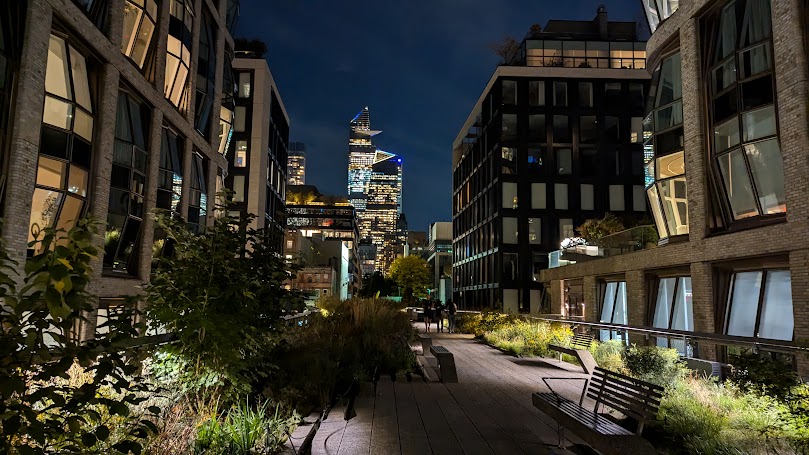
Participants in Celebrate Trails Day reported mental health benefits of time spent being active on the trail (97% of people agree that using trails makes a difference for their mental health and well-being) and the majority say that having events or programming on the trail motivates them to be physically active (85%). More than three-quarters (78%) indicate that they would use trails as part of their everyday routine (e.g., going to the store, school, work or for exercise) and 76% of respondents indicated they chose to swap a car trip for a walk, bike ride or other active transportation on Celebrate Trails Day and at other times in their day-to-day routines.
“Everyone gains from staying active and should have safe and convenient access to trails. It’s also great when these places include green space, welcome all ages and abilities, and include activities like culturally inclusive programs,” said Ken Rose, MPA, physical activity and health branch chief at the CDC. “Good walking and biking trails can help us stay physically and mentally fit by making physical activity a part of our routine. They also bring communities closer together by giving us spaces to meet up and socialize.”
The Centers for Disease Control, which finds increasing physical activity is one of the best things we can do for our health and recommends 150 minutes of moderate-intensity physical activity a day, reports that only about 1 in 4 adults do. Connected trail and active transportation infrastructure makes it possible for more people to incorporate physical activity into routine, everyday activities, like getting to work or school or running errands. Outcomes from Celebrate Trails Day underscore the impact of park, trail and greenway infrastructure improvements—combined with additional interventions, such as events and programming in these spaces—to increase awareness, enhance access and encourage participation as outlined in recommendations by the Community Preventive Services Task Force to increase physical activity.
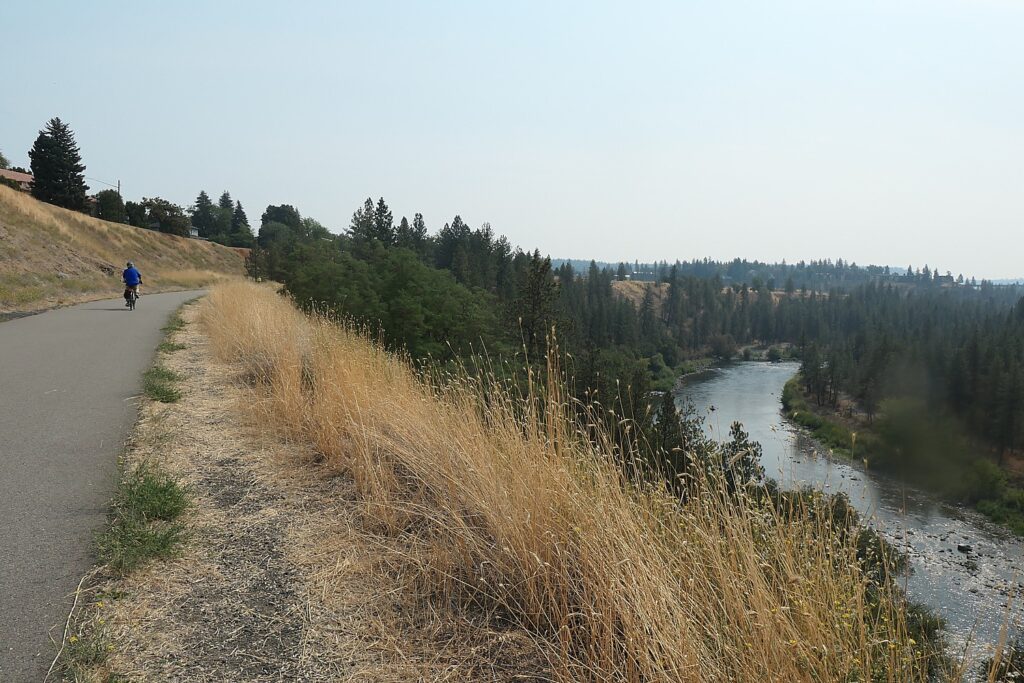
Since 1986, Rails to Trails Conservancy, a nonprofit organization with one million members, has been “dedicated to creating a nationwide network of trails from former rail lines and connecting corridors to build healthier places for healthier people.”
“We reimagine public spaces to create safe ways for everyone to walk, bike and be active outdoors.”
RTC’s most ambitious program to date is the creation of the Great American Rail-Trail, that will ultimately connect more than 125 multi-use recreational trails 3,700 miles across the continent, from Washington D.C., through 12 states, to Washington State. (https://www.railstotrails.org/site/greatamericanrailtrail/)
Some iconic trails are already in place along the Great American Rail-Trail route, while communities, nonprofit partners, state agencies and volunteers are working to build trails to benefit their local area by linking up to the trans-continental network.(See the full list here, https://www.railstotrails.org/site/greatamericanrailtrail/content/route/)
As of January, 2025 the Great American Rail Trail – America’s first trans-continental network – is 55% complete with 2,059 miles of trails out of the total 3,700 miles.(see: https://www.railstotrails.org/resource-library/resources/great-american-rail-trail-route-assessment-2024/)
Rails to Trails Conservancy, 2445 M Street, NW, Suite 650, Washington, DC 20037, 866-202-9788, railstotrails.org.
Bike Tour Companies Embrace Rail Trails
Several bike tour operators offer itineraries on segments of the Great American Rail-Trail:
Wilderness Voyageurs already has tours on many segments of the Great American Rail-Trail – indeed, it is actually headquartered on, the famous and picturesque Great Allegheny Passage, one of the primary building blocks of the east-to-west route.
With the addition of the Iowa Trestles Tour in 2021, Wilderness Voyageurs offers supported rides on more than 820 miles of the route. Its multi-day, inn-to-inn, bike tours on the Great American Rail-Trail visit 14 different trails in eight states These include:
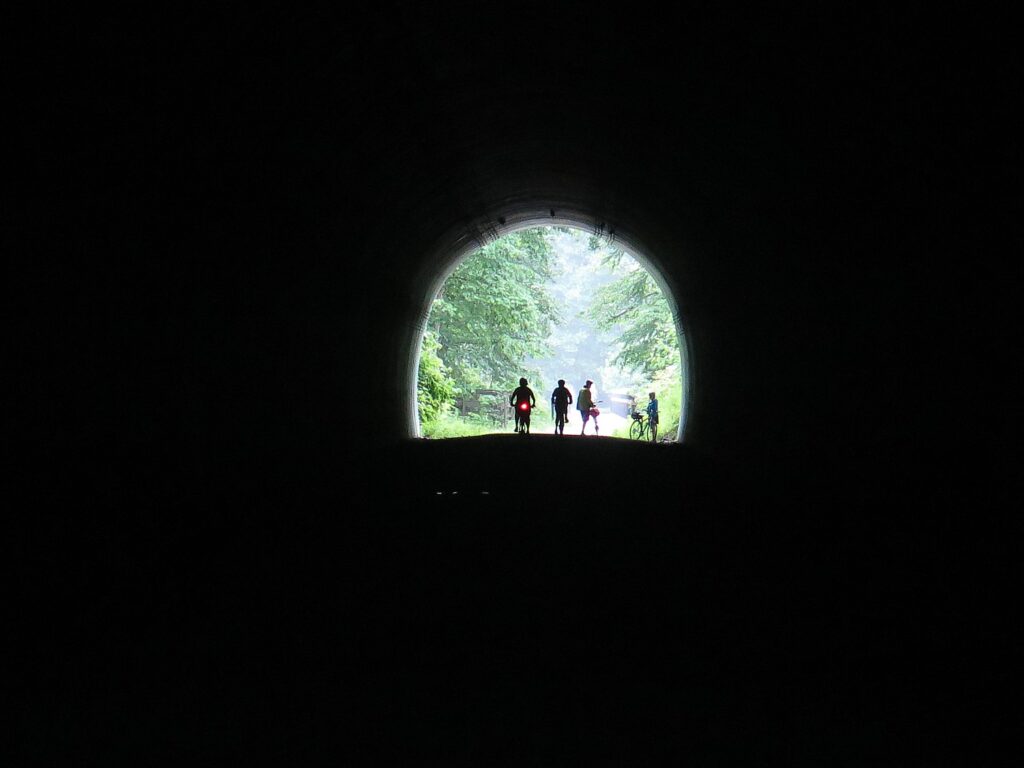
The Great Allegheny Passage (GAP) is an iconic rail-trail that runs 150 miles from Cumberland, Maryland, to Pittsburgh, Pennsylvania, and was built in partnership between state agencies and many local trail groups and volunteers. The GAP is featured on three different trips: a four-day Great Allegheny Passage tour from Pittsburgh to Cumberland; six-day Pittsburgh to D.C. tour, and Pennsylvania and Maryland Easy Rider tour. (Wilderness Voyageurs is headquartered right next to the trail in Ohiopyle, Check out the Great Allegheny Passage for info and travel tips.)
The C&O Canal Towpath from Cumberland to Georgetown is featured on a six-day Pittsburgh to D.C. bike tour Following the Potomac River, the C&O Canal Towpath traverses the Chesapeake & Ohio Canal National Historical Park for 184.5 miles. Hundreds of original features – locks, lock houses, aqueducts and other canal structures – are reminders of the canal’s role as a transportation system during the Canal Era, which peaked in the mid-19th century. The C&O actually connects with the GAP.
Its Pittsburgh to D.C. bike tour includes an optional ride on the Capital Crescent Trail, a paved trail that parallels the canal towpath. The 11-mile trail follows the former route of the Georgetown Branch rail line of the Baltimore & Ohio Railroad.
Both its Gettysburg and the Civil War bike tour and Shenandoah and Skyline Drive bike tours visit part of the towpath near historic Harpers Ferry.
The Cincinnati to Cleveland Tour features a corridor that will ultimately connect the Ohio River in Cincinnati to Lake Erie in Cleveland. Of its planned 326 miles, more than 270 miles of trail are complete visiting six different trails and many beautiful small towns. Besides knocking out a big chunk of the Great American Rail-Trail, you visit Cuyahoga National Park, one of the newest national parks.
The Iowa Trestles Tour is a 4 day meander that cycles 3 different trails that are part of the GART: the High Trestle Trail, the Heart of Iowa Nature Trail and the 2021 inductee to the Rail Trail Hall of Fame, The Raccoon River Valley Trail.
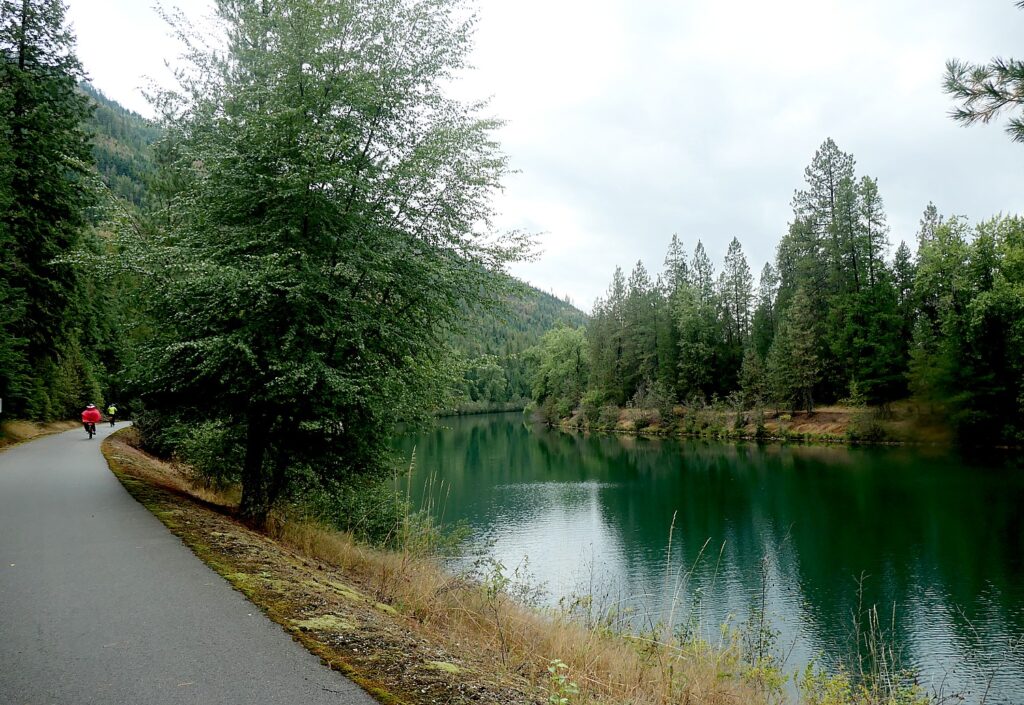
The Idaho Coeur d’Alenes and Hiawatha tour spends time on the NorPac Trail that follows the old right-of-way of the Northern Pacific Railway (hence the trail’s name) in western Montana and the Idaho Panhandle, crossing Lookout Pass. The trail runs from Idaho near Mullan at the trailhead for the Trail of the Coeur d’Alenes, past the East Portal of the Route of the Hiawatha (south of Taft, Montana) and on to the small town of Saltese. The entire trail offers spectacular views of the forested Rocky Mountains as well as lakes and streams.
The Trail of the Coeur d’Alenes covers nearly 72 paved miles through scenic mountains and valleys in Idaho’s Panhandle. The area has a rich mining, railroading and Native American history, and hugs the Lake Coeur d’Alene shoreline, rolling foothills in the Palouse prairie, and goes over the impressive Chatcolet Bridge.
The Washington Olympic Peninsula tour cruises the Olympic Discovery Trail, which is the western terminus of the Great American Rail-Trail. Starting in the Victorian seaport of Port Townsend and ending on the shores of the Pacific Ocean, the ODT is filled with views of snow capped peaks, ocean vistas, fast flowing rivers and pristine lakes, and everywhere the majestic forests of the Pacific Northwest. Olympic National Park, which was established in 1938 by President Franklin Roosevelt, is a UNESCO World Heritage Site. The park is truly special, with 922,650 acres of rain forest, old-growth forest, glacier-topped peaks and alpine meadows. Its forests are home to cougars, bears, deer, woodpeckers, golden eagles, mountain goats and peregrine falcons nesting above the trail on Pyramid Mountain.
(Wilderness Voyageurs has trips on many rail trails in New York, Maryland, Pennsylvania, Florida, Missouri, Wisconsin, Michigan, South Dakota, Idaho and Washington. (See a complete list of rail-trail bike tours)
Wilderness Voyageurs, 103 Garrett Street. Ohiopyle, PA 15470, 724-329-1000, 800-272-4141 wilderness-voyageurs.com
Discovery Bicycle Tours, similarly, offers several trips on rail-trails that are part of the Great American Rail-Trail: C&O Canal Trail; Great Allegheny Passage, Pennsylvania; Silver Comet Trail; the Centennial Trail, the Hiawatha Trail and the Trail of the Coeur d’Alenes on its Idaho Trails tour), as well as many others.

Other Discovery Bicycle Tours rail trail trips include 200 miles of the Empire State Rail Trail from Battery Park, Manhattan to Albany (part of the 750-mile long Empire Trail Network that goes from Battery Park on the southern tip of Manhattan up to the Canadian border, and east-west on the 360-mile-long Erie Canalway from Buffalo to Albany); the longest rail trail in New England, the Lamoille Valley Rail Trail; Appalachian rail trails of Virginia and West Virginia; Mickelson Trail, South Dakota, 6-Day Washington Cascades Trails, and the P’tit du Nord rail trail in Quebec.
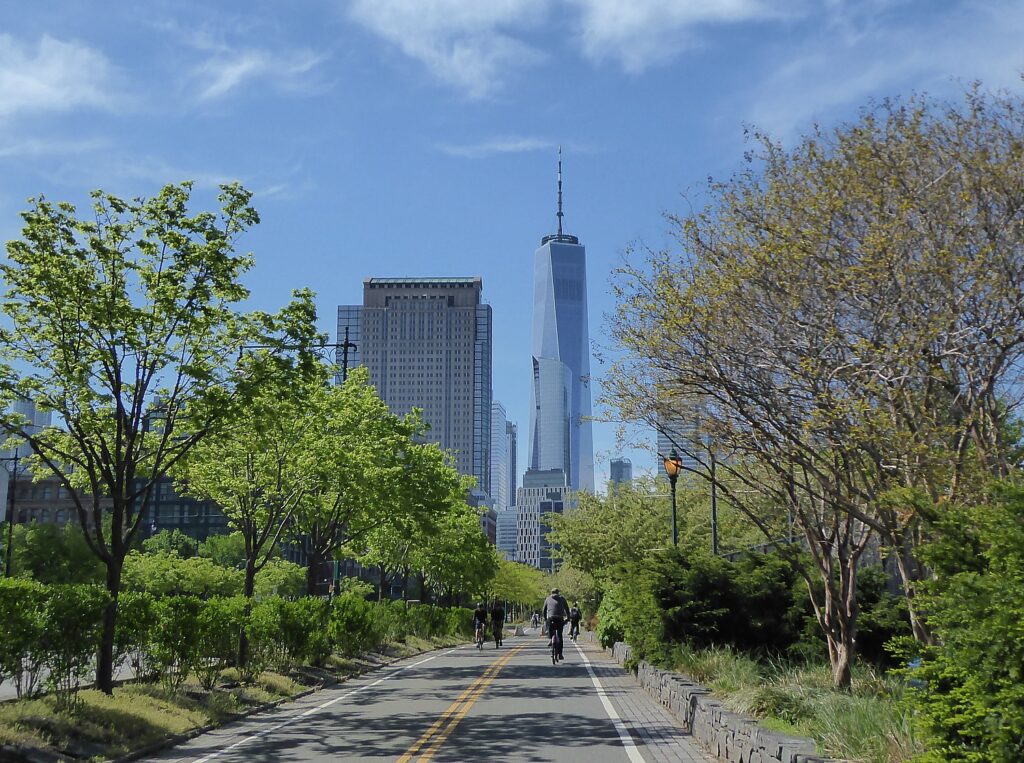
Discovery Bicycle Tours, 2520 W. Woodstock Rd., Woodstock, VT 05091, 888-459-3265, info@discoverybicycletours.com
_____________________
© 2025 Travel Features Syndicate, a division of Workstyles, Inc. All rights reserved. Visit goingplacesfarandnear.com and travelwritersmagazine.com/TravelFeaturesSyndicate/. Blogging at goingplacesnearandfar.wordpress.com and moralcompasstravel.info. Visit instagram.com/going_places_far_and_near and instagram.com/bigbackpacktraveler/ Send comments or questions to FamTravLtr@aol.com. Bluesky: @newsphotosfeatures.bsky.social X: @TravelFeatures Threads: @news_and_photo_features ‘Like’ us at facebook.com/NewsPhotoFeatures
